
Copyright Mark D. Martin 2004-2023, All Rights Reserved
 Copyright Mark D. Martin 2004-2023, All Rights Reserved |
| Home | | | Photos | | | Museum | | | Energy & Environment | | | Links | | | Martin | | | Class Web Site | | | |
WELCOME TO THE CALCULATOR MUSEUM. It contains over 140 calculators, starting with mechanical machines dating back to at least the 1920s to electronic pocket calculators beginning in 1970. I remember a man coming to my eighth grade math class in 1970 or 1971 and showing us a desktop electronic calculator costing hundreds of dollars. I was amazed. It did the difficult math we were doing almost instantaneously. While I was in high school (1971-1975) the first pocket calculators came out. I envied my friend's TI SR-50 scientific calculator which cost about $150 (about $800 in 2021 dollars). My dad got the family a Sharp ELSI 8107 with basic operations when I was a senior in high school. I bought a Commodore scientific calculator while a freshman or sophomore at UC San Diego for $50 (see Vintage Technology Museum for an example) and a beautiful Sharp LCD scientific calculator (below) a year or two later for about $40 when the Commodore broke. Not having a calculator for math through grade 12 made me good at doing hand calculations, and gave me a great appreciation for calculators. The Calculator Museum is divided into several sections generally by manufacturer. The largest holdings are Texas Instrument (TI) calculators. I have divided the TI calculators by type of display, LED or LCD. LED stands for light emitting diode. With LED displays the numbers light up in red. LCD stands for liquid crystal display. LCD displays usually have black numbers against a silver background. At the time of LED displays, there were also vacuum fluorescent displays displaying greenish or bluish numbers. LCD displays rapidly took over since they use a tiny fraction of the energy of a LED or fluorescent display and hence batteries rarely need to be replaced. LCD calculators are also much smaller. For more information on display techonology see vcalc.net. My collection represents only a small fraction of TI calculators. For very comprehensive and detailed information on TI calculators, I recommend you browse through www.datamath.org. My museum also contains sections for calculators from Sharp, Casio, Hewlett Packard and other manufacturers. Where I could find or remember information, I have included the approximate price of the calculators. It is striking how rapidly prices declined. Visit often. Additions are made every so often. Donations of vintage calculators are also always gratefully accepted. |
||||||||||||||||||||||||||||||||||||||||||||||||||||||||||||||||||||||||||||||||||||||||||||||||||||||||||||||||||||||||||||||||||||||||||||||||||||||||||||||||||||||||||||||||||||||||||||||||||||||||||||||||||||||||||||||||||||||||||||||||||||||||||||||||||||||||||||||||||||||||||||||||||||||||||||||||||||||||||||||||||
| ||||||||||||||||||||||||||||||||||||||||||||||||||||||||||||||||||||||||||||||||||||||||||||||||||||||||||||||||||||||||||||||||||||||||||||||||||||||||||||||||||||||||||||||||||||||||||||||||||||||||||||||||||||||||||||||||||||||||||||||||||||||||||||||||||||||||||||||||||||||||||||||||||||||||||||||||||||||||||||||||||
![[TI Datamath - 2500]](images/calculator/tidatamath.jpg) |
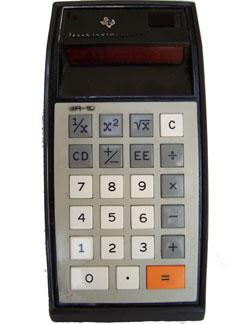 |
![[TI SR-50]](images/calculator/tisr50.jpg) |
||||||||||||||||||||||||||||||||||||||||||||||||||||||||||||||||||||||||||||||||||||||||||||||||||||||||||||||||||||||||||||||||||||||||||||||||||||||||||||||||||||||||||||||||||||||||||||||||||||||||||||||||||||||||||||||||||||||||||||||||||||||||||||||||||||||||||||||||||||||||||||||||||||||||||||||||||||||||||||||||
![[TI 2550]](images/calculator/ti2550.jpg) |
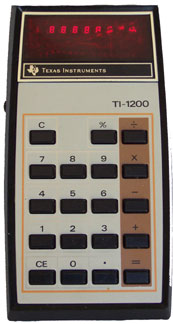 |
![[TI 35]](images/calculator/ti30.jpg) |
||||||||||||||||||||||||||||||||||||||||||||||||||||||||||||||||||||||||||||||||||||||||||||||||||||||||||||||||||||||||||||||||||||||||||||||||||||||||||||||||||||||||||||||||||||||||||||||||||||||||||||||||||||||||||||||||||||||||||||||||||||||||||||||||||||||||||||||||||||||||||||||||||||||||||||||||||||||||||||||||
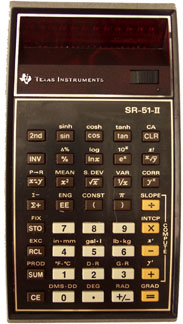 |
 |
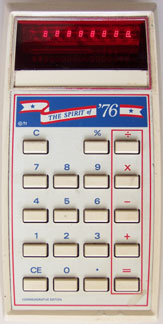 |
||||||||||||||||||||||||||||||||||||||||||||||||||||||||||||||||||||||||||||||||||||||||||||||||||||||||||||||||||||||||||||||||||||||||||||||||||||||||||||||||||||||||||||||||||||||||||||||||||||||||||||||||||||||||||||||||||||||||||||||||||||||||||||||||||||||||||||||||||||||||||||||||||||||||||||||||||||||||||||||||
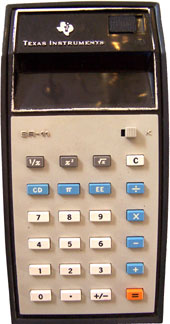 |
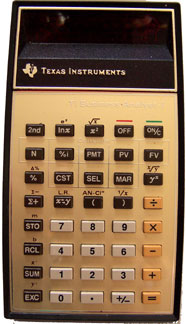 |
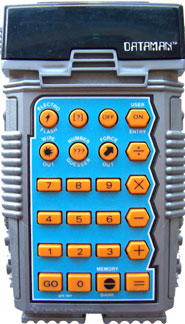 |
||||||||||||||||||||||||||||||||||||||||||||||||||||||||||||||||||||||||||||||||||||||||||||||||||||||||||||||||||||||||||||||||||||||||||||||||||||||||||||||||||||||||||||||||||||||||||||||||||||||||||||||||||||||||||||||||||||||||||||||||||||||||||||||||||||||||||||||||||||||||||||||||||||||||||||||||||||||||||||||||
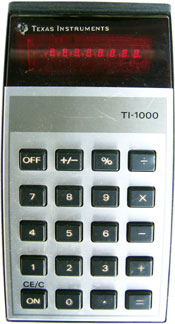 |
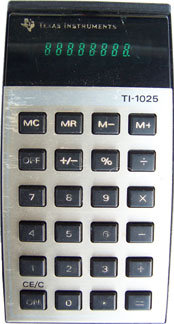 |
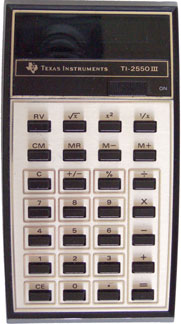 |
||||||||||||||||||||||||||||||||||||||||||||||||||||||||||||||||||||||||||||||||||||||||||||||||||||||||||||||||||||||||||||||||||||||||||||||||||||||||||||||||||||||||||||||||||||||||||||||||||||||||||||||||||||||||||||||||||||||||||||||||||||||||||||||||||||||||||||||||||||||||||||||||||||||||||||||||||||||||||||||||
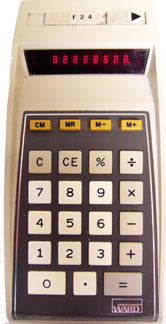 |
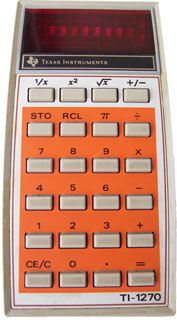 |
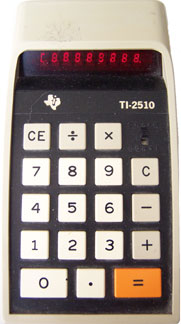 |
||||||||||||||||||||||||||||||||||||||||||||||||||||||||||||||||||||||||||||||||||||||||||||||||||||||||||||||||||||||||||||||||||||||||||||||||||||||||||||||||||||||||||||||||||||||||||||||||||||||||||||||||||||||||||||||||||||||||||||||||||||||||||||||||||||||||||||||||||||||||||||||||||||||||||||||||||||||||||||||||
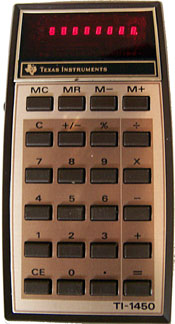 |
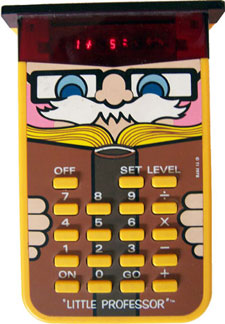 |
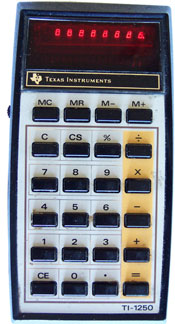 |
||||||||||||||||||||||||||||||||||||||||||||||||||||||||||||||||||||||||||||||||||||||||||||||||||||||||||||||||||||||||||||||||||||||||||||||||||||||||||||||||||||||||||||||||||||||||||||||||||||||||||||||||||||||||||||||||||||||||||||||||||||||||||||||||||||||||||||||||||||||||||||||||||||||||||||||||||||||||||||||||
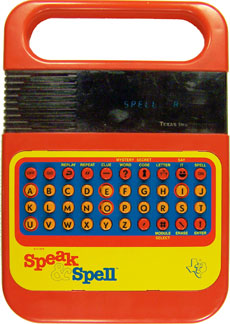 |
TI Speak & Spell, introduced in 1978 at a price of $50. The original version had button keys and was replaced in 1980 with a second version (see Datamath) with membrane keys. Mine is a late run of the original version with AC input (or 4 C batteries) and a headphone jack. Datamath has extensive information on the Speak & Spell under the category of "Speech Products." Be sure to follow all the links within Datamath to get the full story. Datamath also has extensive internal photos. As explained in Datamath, this toy used recently invented voice synthesization to say letters and words. It included several different types of word games. A novel use of a Speak & Spell is by ET, the Extraterrestrial, who used a modified Speak & Spell to phone home in the 1982 movie. Pretty cool since home was far away! People also modify Speak and Spells and other voice synthesizer toys to make strange sounds or music in a process called "circuit bending." Several other sites have information on this innovative toy: 99er.net, Wikipedia, Speak & Spell Emulator, another Emulator, Nostalgia, Speak N Spell. Mine was purchased on eBay in 2005 or 2006. It is in good cosmetic condition. The battery cover is missing. Originally it worked only with an AC adapter. There was some corrosion on one of the battery compartment terminals. With some Aluminum foil wedged in I finally got it working. The main game of the Speak & Spell saying a word, and then the player spelling it, does not seem to work, however. It is serial no. 5546862 and was assembled in the USA. Back removed. | |||||||||||||||||||||||||||||||||||||||||||||||||||||||||||||||||||||||||||||||||||||||||||||||||||||||||||||||||||||||||||||||||||||||||||||||||||||||||||||||||||||||||||||||||||||||||||||||||||||||||||||||||||||||||||||||||||||||||||||||||||||||||||||||||||||||||||||||||||||||||||||||||||||||||||||||||||||||||||||||||
![[TI 3000]](images/calculator/ti3000.jpg) |
![[TI 3500]](images/calculator/ti3500.jpg) |
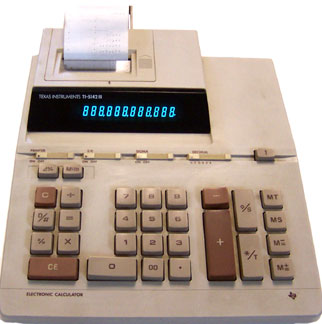 TI 5142 III, 1983 desktop calculator with printing tape and fluorescent display manufactured in Japan by Toshiba according to www.datamath.org. Purchased on March 12, 2005 at a garage sale in the San Carlos area of San Diego for $.50. In excellent working condition except for faint printout. |
||||||||||||||||||||||||||||||||||||||||||||||||||||||||||||||||||||||||||||||||||||||||||||||||||||||||||||||||||||||||||||||||||||||||||||||||||||||||||||||||||||||||||||||||||||||||||||||||||||||||||||||||||||||||||||||||||||||||||||||||||||||||||||||||||||||||||||||||||||||||||||||||||||||||||||||||||||||||||||||||
| ||||||||||||||||||||||||||||||||||||||||||||||||||||||||||||||||||||||||||||||||||||||||||||||||||||||||||||||||||||||||||||||||||||||||||||||||||||||||||||||||||||||||||||||||||||||||||||||||||||||||||||||||||||||||||||||||||||||||||||||||||||||||||||||||||||||||||||||||||||||||||||||||||||||||||||||||||||||||||||||||||
![[TI 1750]](images/calculator/ti1750.jpg) |
![[TI 1030]](images/calculator/ti1030.jpg) |
![[TI 35 LCD]](images/calculator/ti35lcd.jpg) |
||||||||||||||||||||||||||||||||||||||||||||||||||||||||||||||||||||||||||||||||||||||||||||||||||||||||||||||||||||||||||||||||||||||||||||||||||||||||||||||||||||||||||||||||||||||||||||||||||||||||||||||||||||||||||||||||||||||||||||||||||||||||||||||||||||||||||||||||||||||||||||||||||||||||||||||||||||||||||||||||
![[TI Student Business Analyst 35]](images/calculator/tiba35.jpg) |
![[TI Business Analyst II Plus]](images/calculator/tibaiip.jpg) |
![[TI Math to Go]](images/calculator/timtg.jpg) |
||||||||||||||||||||||||||||||||||||||||||||||||||||||||||||||||||||||||||||||||||||||||||||||||||||||||||||||||||||||||||||||||||||||||||||||||||||||||||||||||||||||||||||||||||||||||||||||||||||||||||||||||||||||||||||||||||||||||||||||||||||||||||||||||||||||||||||||||||||||||||||||||||||||||||||||||||||||||||||||||
![[TI 30X IIS]](images/calculator/ti30xiis.jpg) |
![[TI 36XII]](images/calculator/ti36xii.jpg) |
![[TI 30X IIb]](images/calculator/ti30xiib.jpg) |
||||||||||||||||||||||||||||||||||||||||||||||||||||||||||||||||||||||||||||||||||||||||||||||||||||||||||||||||||||||||||||||||||||||||||||||||||||||||||||||||||||||||||||||||||||||||||||||||||||||||||||||||||||||||||||||||||||||||||||||||||||||||||||||||||||||||||||||||||||||||||||||||||||||||||||||||||||||||||||||||
![[TI 81 Graphing Calculator]](images/calculator/ti81.jpg) |
![[TI 83 Plus Graphing Calculator]](images/calculator/ti83p.jpg) |
|||||||||||||||||||||||||||||||||||||||||||||||||||||||||||||||||||||||||||||||||||||||||||||||||||||||||||||||||||||||||||||||||||||||||||||||||||||||||||||||||||||||||||||||||||||||||||||||||||||||||||||||||||||||||||||||||||||||||||||||||||||||||||||||||||||||||||||||||||||||||||||||||||||||||||||||||||||||||||||||||
![[TI 1001]](images/calculator/ti1001.jpg) |
![[TI 7140]](images/calculator/ti7140.jpg) |
![[TI 5008]](images/calculator/ti5008.jpg) |
||||||||||||||||||||||||||||||||||||||||||||||||||||||||||||||||||||||||||||||||||||||||||||||||||||||||||||||||||||||||||||||||||||||||||||||||||||||||||||||||||||||||||||||||||||||||||||||||||||||||||||||||||||||||||||||||||||||||||||||||||||||||||||||||||||||||||||||||||||||||||||||||||||||||||||||||||||||||||||||||
![[TI BA-45]](images/calculator/tiba45.jpg) |
![[TI E.T. Calculator]](images/calculator/tiet.jpg) |
|||||||||||||||||||||||||||||||||||||||||||||||||||||||||||||||||||||||||||||||||||||||||||||||||||||||||||||||||||||||||||||||||||||||||||||||||||||||||||||||||||||||||||||||||||||||||||||||||||||||||||||||||||||||||||||||||||||||||||||||||||||||||||||||||||||||||||||||||||||||||||||||||||||||||||||||||||||||||||||||||
| ||||||||||||||||||||||||||||||||||||||||||||||||||||||||||||||||||||||||||||||||||||||||||||||||||||||||||||||||||||||||||||||||||||||||||||||||||||||||||||||||||||||||||||||||||||||||||||||||||||||||||||||||||||||||||||||||||||||||||||||||||||||||||||||||||||||||||||||||||||||||||||||||||||||||||||||||||||||||||||||||||
![[Sharp QT-8D]](images/calculator/sharpqt8d.jpg) | Sharp QT-8D Micro Compet first advertised in October 1969, this was the first calculator model to use large scale integrated circuits and therefore represents a significant milestone in calculator history. (See, e.g., oldcalculatormuseum.com, vintagecalculators.com.) Later a battery pack was added to create the Model QT-8B, one of the first portable calculators. According to datamath.org, the original price was $495. (I have seen an old ad stating a $395 price, however.) $495 in 1969 dollars equals an astonishing $2,868.96 in 2009 dollars. The QT-8D was nevertheless not only much smaller than prior electronic calculators, but also much less expensive. It has a green fluorescent display with strange shaped numerals including half height zeros. I purchased mine in April 2009 at a La Jolla, CA estate sale for $20. It is in excellent cosmetic and working condition. A great piece of calculator history! (Other images: bottom, label) | |||||||||||||||||||||||||||||||||||||||||||||||||||||||||||||||||||||||||||||||||||||||||||||||||||||||||||||||||||||||||||||||||||||||||||||||||||||||||||||||||||||||||||||||||||||||||||||||||||||||||||||||||||||||||||||||||||||||||||||||||||||||||||||||||||||||||||||||||||||||||||||||||||||||||||||||||||||||||||||||||
![[Sharp EL-811]](images/calculator/sharpel811lg.jpg) | Sharp EL-811 (Circa 1972) The Sharp EL-811 (aka Sharp Compet ELSI-811) is of the earliest Sharp battery powered hand-held calculators. The first battery powered Sharp was the Sharp QT-8B (1970) developed from the AC operated Sharp QT-8D above. The Sharp QT-8B was followed by the smaller Sharp EL-8 from late 1970 to early 1971. (Vintage Calculators Web Museum - Sharp. See also Sharp EL-8 - National Museum of American History). The Sharp EL-8 was followed by the Sharp EL-8M in 1971 which added a single memory register. (John Wolf's Web Museum - Sharp EL-8 and EL-8M Portable Calculators.) The Sharp EL-811 was next. At roughly 10.5cm wide by 17cm long by 4cm high, it's not quite a pocket calculator unless you have big pockets. The width and length were similar to the Sharp EL-8, but the EL-811 is almost half the height. (See John Wolf's Web Museum - EL-811.) It has an 8 digit display with green fluorescent tubes. The individual numerals are very interesting including half height zeros. (See Large Image showing display.) The calculator actually calculates to 16 digits. The additional digits can be shown by depressing the double arrow key. Basic instructions are on the back. Several sites have detailed information on the Sharp EL-811 including Datamath, Old Calculator Museum Web Museum, Vintage Calculators Web Museum, Calcuseum (includes Australian and French ads), John Wolff's Web Museum, and Early Sharp Calculators Internal Photographs. | My Sharp EL-811 was a generous gift in June 2020 from a gentleman in Wisconsin who purchased the calculator in 1972 for around $400 while he was at the University of Wisconsin, Milwaukee. $400 in 1972 dollars has the buying power of about $2,700 in 2021! Five years later my Sharp EL-5805 scientific calculator below with LCD display cost about $40 or about $180 in 2021 dollars. This demonstrates how rapidly calculator technology increased, and calculator costs decreased, in the 1970s. All of this paved the way for personal computers and eventually smart phones. My Sharp EL-811 is in good cosmetic and working condition. It comes with the original case with a piece of paper in it with handwritten calculus formulas. The calculator originally came with a rechargeable battery pack Model EL-84 with six 1.2 volt NiCad cells. These were corroded and no longer functioned after nearly 50 years. I instead wired in a battery pack with five 1.5 volt single use batteries. It works fine with this battery pack. Looking at an internal view you can see the two Rockwell integrated circuits, 10572PA-7152 and 10573PA-7150. You can also see a variety of other individual components. This photograph compares that with the single printed board of a modern Casio fx-300ES Plus scientific calculator which I recommended to my middle school math students. The modern Casio has a retail price of about $13. Without the cover, the Casio weighs 89 grams compared to 529 grams for the Sharp EL-811. The label at the top of the calculator gives a power range for the Sharp EL-811 of 1.3 to 1.9 Watts. That compares with the 1973 Sharp EL-805 below with an LED display of .02 Watts. | ||||||||||||||||||||||||||||||||||||||||||||||||||||||||||||||||||||||||||||||||||||||||||||||||||||||||||||||||||||||||||||||||||||||||||||||||||||||||||||||||||||||||||||||||||||||||||||||||||||||||||||||||||||||||||||||||||||||||||||||||||||||||||||||||||||||||||||||||||||||||||||||||||||||||||||||||||||||||||||||||
![[Sharp EL-805]](images/calculator/sharpel805.jpg) | Sharp EL-805, released May 15, 1973, this is the first Sharp LCD calculator and one of the first LCD calculators ever. The first is the Lloyd's Accumatic 100, produced by Rockwell in 1972, according to Vintage Calculators. My Sears C1 appears to be a variant of the Accumatic 100. See www.dentaku-museum.com (in Japanese). The EL-805 employed a crystal on substrate design with silver numbers against a black display. See additonal EL-805 pictures at datamath.org. The processor and LCD were on a single piece of glass. It used a tiny fraction of the energy of an LED calculator and could operate on a single AA battery for 100 hours. The back states it used .02 Watts which at the time was an amazing feat. The Sharp EL-811 above gives a power range of 1.3 to 1.9 Watts. | Datamath (go to "calculators related to TI") states the price was $110, nearly $500 in 2005 dollars! Sharp LCD Calculators and Vintage Calculators have excellent information about the history of Sharp LCD calculators. Wikipedia has information about LCD technology. Purchased on eBay on 11-27-05 for $26 with $6.50 shipping. Excellent working condition. (The display is fine. The photo is just fuzzy.) Excellent cosmetic condition except for light scratches on the back and a name and social security number lightly scratched onto the back. Soft case and instruction manual. Flip up cover over the display like the EL-808 below. Much smaller that the EL-808, with dimensions of approximately 8cm x 12cm x 2cm. | ||||||||||||||||||||||||||||||||||||||||||||||||||||||||||||||||||||||||||||||||||||||||||||||||||||||||||||||||||||||||||||||||||||||||||||||||||||||||||||||||||||||||||||||||||||||||||||||||||||||||||||||||||||||||||||||||||||||||||||||||||||||||||||||||||||||||||||||||||||||||||||||||||||||||||||||||||||||||||||||||
![[Sharp EL-808]](images/calculator/sharpel808.jpg) |
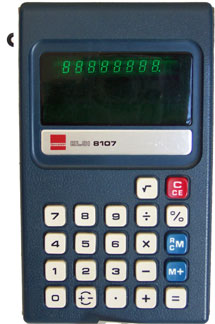 |
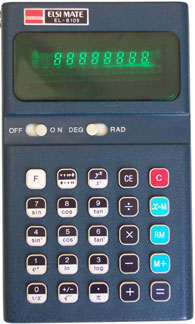 |
||||||||||||||||||||||||||||||||||||||||||||||||||||||||||||||||||||||||||||||||||||||||||||||||||||||||||||||||||||||||||||||||||||||||||||||||||||||||||||||||||||||||||||||||||||||||||||||||||||||||||||||||||||||||||||||||||||||||||||||||||||||||||||||||||||||||||||||||||||||||||||||||||||||||||||||||||||||||||||||||
![[Sharp ELSI MATE EL-5805]](images/calculator/shel5805.jpg) |
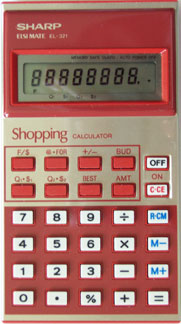 |
![[Sharp ELSI MATE EL-819]](images/calculator/sharp819.jpg) | ||||||||||||||||||||||||||||||||||||||||||||||||||||||||||||||||||||||||||||||||||||||||||||||||||||||||||||||||||||||||||||||||||||||||||||||||||||||||||||||||||||||||||||||||||||||||||||||||||||||||||||||||||||||||||||||||||||||||||||||||||||||||||||||||||||||||||||||||||||||||||||||||||||||||||||||||||||||||||||||||
![[Math Venture 300 Overhead Calculator]](images/calculator/sharpele300ov.jpg) |
![[Sharp EL- E300]](images/calculator/sharpe300.jpg) |
![[Sharp EL 501v]](images/calculator/shel501v.jpg) |
||||||||||||||||||||||||||||||||||||||||||||||||||||||||||||||||||||||||||||||||||||||||||||||||||||||||||||||||||||||||||||||||||||||||||||||||||||||||||||||||||||||||||||||||||||||||||||||||||||||||||||||||||||||||||||||||||||||||||||||||||||||||||||||||||||||||||||||||||||||||||||||||||||||||||||||||||||||||||||||||
![[Sharp Calculator Watch]](images/calculator/sharpcalcwatch.jpg) |
![[Sharp EL-509s]](images/calculator/sharpel509s.jpg) |
![[Sharp EL-8118]](images/calculator/sharpel8118.jpg) |
||||||||||||||||||||||||||||||||||||||||||||||||||||||||||||||||||||||||||||||||||||||||||||||||||||||||||||||||||||||||||||||||||||||||||||||||||||||||||||||||||||||||||||||||||||||||||||||||||||||||||||||||||||||||||||||||||||||||||||||||||||||||||||||||||||||||||||||||||||||||||||||||||||||||||||||||||||||||||||||||
![[Sharp EL-208]](images/calculator/sharpel208.jpg) |
![[Sharp EL-230]](images/calculator/sharpel230.jpg) |
![[Sharp EL-8118]](images/calculator/sharporganizer.jpg) |
||||||||||||||||||||||||||||||||||||||||||||||||||||||||||||||||||||||||||||||||||||||||||||||||||||||||||||||||||||||||||||||||||||||||||||||||||||||||||||||||||||||||||||||||||||||||||||||||||||||||||||||||||||||||||||||||||||||||||||||||||||||||||||||||||||||||||||||||||||||||||||||||||||||||||||||||||||||||||||||||
![[Sharp EL-203]](images/calculator/sharpel203.jpg) |
![[Sharp EL-502]](images/calculator/sharp502.jpg) |
![[Sharp EL-8145]](images/calculator/sharp8145.jpg) |
||||||||||||||||||||||||||||||||||||||||||||||||||||||||||||||||||||||||||||||||||||||||||||||||||||||||||||||||||||||||||||||||||||||||||||||||||||||||||||||||||||||||||||||||||||||||||||||||||||||||||||||||||||||||||||||||||||||||||||||||||||||||||||||||||||||||||||||||||||||||||||||||||||||||||||||||||||||||||||||||
![[Sharp EL-506H]](images/calculator/sharp506h.jpg) |
![[Sharp EL-8141]](images/calculator/sharp8141.jpg) |
![[Sharp Pocket Computer PC-1350]](images/calculator/sharppc1350.jpg) |
||||||||||||||||||||||||||||||||||||||||||||||||||||||||||||||||||||||||||||||||||||||||||||||||||||||||||||||||||||||||||||||||||||||||||||||||||||||||||||||||||||||||||||||||||||||||||||||||||||||||||||||||||||||||||||||||||||||||||||||||||||||||||||||||||||||||||||||||||||||||||||||||||||||||||||||||||||||||||||||||
![[Sharp EL-5500III]](images/calculator/sharpel5500iii.jpg) | Sharp Scientific Computer EL-5500III with Sharp Printer and Cassette Interface CE-129P (1985-1991) (Large Image) Dates are from Eddie's Math and Calculator Blog which has an excellent 2017 Retro Review of the calculator. (See also Bob's Calculators and Slide Rules; YouTube Video Review.) SharpPocketComputers.com states the 1987 price for the EL-5500III alone was $99.95 or about $270 in February 2023 dollars. It has two modes: a scientific calculator mode and a BASIC programming mode. It takes two CR-2032 3V batteries. The RAM memory for programs and data is 6,878 bytes (6.878 KB). In contrast, a typical budget smartphone as I write this in 2023 has 6 to 8GB of RAM, or about 1 million times more RAM! (See androidauthority.com re amount of RAM in smartphone in 2023.) According to page 211 of the manual, it has System ROM of 72 kilobytes. The manual for the Sharp PC-1403 is at SharpPocketComputers.com. The Sharp EL-5500III is the U.S. version of the Sharp PC-1403. (See Museum of HP Calculators.) I believe I purchased this at a garage sale many years ago for $10 since it has a handwritten "complete $10" sticker on it. My EL-5500III is in excellent cosmetic and working condition. It came with the Sharp Printer and Cassette Interface CE-129P which allows you to print programs and the results of programs. The calculator slides into the unit where it connects to an eleven pin connector. The unit is designed to print only when the EL-5500III is in calculator mode. It is in excellent cosmetic condition, although I have not tried printing with it. The printing unit takes four 1.5 volt AA batteries. On the side there is an interface to hook it up to a cassette tape recorder to store programs and data. | |||||||||||||||||||||||||||||||||||||||||||||||||||||||||||||||||||||||||||||||||||||||||||||||||||||||||||||||||||||||||||||||||||||||||||||||||||||||||||||||||||||||||||||||||||||||||||||||||||||||||||||||||||||||||||||||||||||||||||||||||||||||||||||||||||||||||||||||||||||||||||||||||||||||||||||||||||||||||||||||||
![[Sharp HC-4100]](images/calculator/sharphc4100.jpg) | Sharp HC-4100 (Large Image, Closed) Announced October 13, 1997. (Google Groups.) The specifications are listed in Exhibits A-C on a Federal Trade Commission complaint against Sharp for failing to offer upgrades to the Windows CE operating system and software installed on the HC-4100 and similar machines. The software installed on the machine included "Pocket" versions of Microsoft Word, Excel, PowerPoint, Outlook, Internet Explorer, and Microsoft Accessories including a calculator. It also included a voice recorder, an image editor, and a built-in 33.6Kbps low power modem. While I have included this in the calculator section, it is clear it is a small, general purpose computer. Divisions between calculators, computers, laptops, tablets, and cell phones would continue to blur as smartphones were developed in the 1990s and 2000s. (See, generally, Smartphone - Wikipedia.) Eventually, Apple and Android operating systems would prevail on smartphones. My HC-4100 is in good cosmetic condition and works once I replaced the two AA alkaline batteries and the CR 2025 battery that were in it. I replaced the CR2025 battery with a thicker CR2032 battery which is actually what the manual specifies. The manual is available at manualslib.com. I'm missing the stylus that fits in the front of the machine. I could navigate on the touch screen with a pen cap, however. | |||||||||||||||||||||||||||||||||||||||||||||||||||||||||||||||||||||||||||||||||||||||||||||||||||||||||||||||||||||||||||||||||||||||||||||||||||||||||||||||||||||||||||||||||||||||||||||||||||||||||||||||||||||||||||||||||||||||||||||||||||||||||||||||||||||||||||||||||||||||||||||||||||||||||||||||||||||||||||||||||
| ||||||||||||||||||||||||||||||||||||||||||||||||||||||||||||||||||||||||||||||||||||||||||||||||||||||||||||||||||||||||||||||||||||||||||||||||||||||||||||||||||||||||||||||||||||||||||||||||||||||||||||||||||||||||||||||||||||||||||||||||||||||||||||||||||||||||||||||||||||||||||||||||||||||||||||||||||||||||||||||||||
![[Casio AS-8D]](images/calculator/casioas8d.jpg) |
![[Casio Memory 8R]](images/calculator/casio8r.jpg) Casio Memory 8R, (1975 Japan) horizontal design, purchased on eBay on 5-22-05 for $2 ($3.50 shipping). Keys and logic in good working condition. Power works sometimes with the AC adapter but the wire at the adapter is loose. The adapter can't be opened. The calculator takes two AA batteries. The connection with the + end of the battery is a problem. It works intermittently by placing aluminum foil at the contact and the two silver areas above it. See lower left of board in interior view 1 revealed when you remove back plastic cover. Folding that board up reveals interior view 2, showing the main circuit board connected by 12 wires to the board with the keys. Interior view 3 shows the main circuit board. Find comprehensive information at Vintage Technology. I purchased a second one on eBay in very good cosmetic and working condition on 3-2-06 for $2.50 plus $5 shipping. |
![[Casio Personal I]](images/calculator/casiopersonal.jpg) Casio Personal I, (1976 Japan) 8 digit flourcent display. In good working condition with either included AC adapter or two AA batteries. Purchased at La Mesa garage sale on October 8, 2005 for $2. More at Vintage Technology. |
||||||||||||||||||||||||||||||||||||||||||||||||||||||||||||||||||||||||||||||||||||||||||||||||||||||||||||||||||||||||||||||||||||||||||||||||||||||||||||||||||||||||||||||||||||||||||||||||||||||||||||||||||||||||||||||||||||||||||||||||||||||||||||||||||||||||||||||||||||||||||||||||||||||||||||||||||||||||||||||||
![[Casio SL-100 Folding LCD Calculator]](images/calculator/casl100.jpg) |
![[Casio fx-115v Super FX]](images/calculator/cafx.jpg) |
![[Casio fx-7000G]](images/calculator/casiofx7000g.jpg) |
||||||||||||||||||||||||||||||||||||||||||||||||||||||||||||||||||||||||||||||||||||||||||||||||||||||||||||||||||||||||||||||||||||||||||||||||||||||||||||||||||||||||||||||||||||||||||||||||||||||||||||||||||||||||||||||||||||||||||||||||||||||||||||||||||||||||||||||||||||||||||||||||||||||||||||||||||||||||||||||||
![[Casio fx-260 Solar Fraction]](images/calculator/casio260.jpg) |
![[Casio OH-260 Solar Overhead Calculator]](images/calculator/casiooh280.jpg) |
![[Casio fx 115ms]](images/calculator/cafx115ms.jpg) |
||||||||||||||||||||||||||||||||||||||||||||||||||||||||||||||||||||||||||||||||||||||||||||||||||||||||||||||||||||||||||||||||||||||||||||||||||||||||||||||||||||||||||||||||||||||||||||||||||||||||||||||||||||||||||||||||||||||||||||||||||||||||||||||||||||||||||||||||||||||||||||||||||||||||||||||||||||||||||||||||
![[Casio Mini CM-605]](images/calculator/casiomini.jpg) |
![[Casio Personal Mini CM-607]](images/calculator/casiopersonalmini.jpg) |
|||||||||||||||||||||||||||||||||||||||||||||||||||||||||||||||||||||||||||||||||||||||||||||||||||||||||||||||||||||||||||||||||||||||||||||||||||||||||||||||||||||||||||||||||||||||||||||||||||||||||||||||||||||||||||||||||||||||||||||||||||||||||||||||||||||||||||||||||||||||||||||||||||||||||||||||||||||||||||||||||
| ||||||||||||||||||||||||||||||||||||||||||||||||||||||||||||||||||||||||||||||||||||||||||||||||||||||||||||||||||||||||||||||||||||||||||||||||||||||||||||||||||||||||||||||||||||||||||||||||||||||||||||||||||||||||||||||||||||||||||||||||||||||||||||||||||||||||||||||||||||||||||||||||||||||||||||||||||||||||||||||||||
![[Hewlett Packard 35]](images/calculator/hp35.jpg) |
Hewlett Packard 35, (1972-1975) this historic model was the first scientific pocket calculator and signaled HP as an innovator in calculator design. It sold for $395, over $1,800 in 2006 dollars. Like many HP calculators the HP 35 uses Reverse Polish Notation (RPN). With RPN you first enter the number and then tell the calculator what to do with it. According to an HP article on RPN, RPN has several advantages over typical algebraic entry including showing intermediate answers and using fewer keystrokes. HP says it's easy, and now even has a virtual RPN calculator at the above link to try it out. Made in USA. Mine appears to be the third of four versions of the HP 35. Over 300,000 were sold, vastly exceeding expectations. The HP 35 signaled the death of the slide rule. The TI 50 eventually competed with it with a significantly lower price but without the RPN preferred by many. Mine was purchased for $45 with $5 shipping in February 2006 on eBay. That's expensive, but HP calcualtors, both used and new, tend to be expensive. The description said it works, but it did not come with batteries or a charger to test it. I had an HP charger (82026A) from a garage sale ($1) that I thought would work, but it has a slightly different two hole connection while the HP 35 calculator has three pins. After some experimenting I got it to work with three 1.2 volt NI-MH rechargeable batteries taped together with Aluminum foil to join negative and positive terminals and speaker wire to hook the battery terminials to the calculator terminals (upper one went to negative battery terminal). This closely approximates the 3.5 volts of the original battery pack. (I did not do this for long and I don't know if this can cause injury or damage, so don't necessarily do what I did!) With this arrangement you, of course, must charge the batteries outside the calculator in an appropriate battery charger. There is excellent information on the HP 35 at several sites including HP site, Museum of HP Calculators, Museum of HP Calculators Simulation, Wikipedia, Vintage Calculators, Making New Battery Packs for the HP 35 Calculator, Educalc.net (exploded view), HP Calculator History - Trascendental Functions, Datamath.org - Internal View HP 35. | |||||||||||||||||||||||||||||||||||||||||||||||||||||||||||||||||||||||||||||||||||||||||||||||||||||||||||||||||||||||||||||||||||||||||||||||||||||||||||||||||||||||||||||||||||||||||||||||||||||||||||||||||||||||||||||||||||||||||||||||||||||||||||||||||||||||||||||||||||||||||||||||||||||||||||||||||||||||||||||||||
![[Hewlett Packard 67]](images/calculator/hp67lg.jpg) |
Hewlett Packard 67, (1976-1982) The HP 67 is a programable scientific calculator that was introduced around the height of the calculator boom of the 1970s and at the beginning of the personal computer revolution. (The Altair 8088 computer was introduced in 1975 and the Apple 1 computer was introduced in July 1976.) The similar HP 97 was a desktop version with an integrated printer. The HP 67 sold for $450 in 1976, or about $2075 in 2020 dollars. That's a lot of money but having that computing power in your pocket was well worth it to engineers and scientists. The HP 67 was the successor to the HP 65 introduced in 1974 with a suggested retail price of $795, or about $4,400 in 2020 dollars! The HP 65 was the first hand-held programmable calculator. At the time, Apple co-founder, Steve Wozniak, was a scientific calculator designer at Hewlett Packard and sold his HP 65 in 1976 for $500 to help finance the start of Apple Computers. In 2013 Wozniak stated, "The next month HP was going to introduce the HP-67, a better calculator, and my employee price would be $370." www.bizjournals.com. Wozniak had offered his Apple 1 design to Hewlett Packard five different times without success. HP made a programable electronic desktop calculator, the HP 9100A, in 1968 that could be considered an early personal computer. For marketing purposes, they called it a desktop calculator, however. Bill Hewlett said, "If we had called it a computer, it would have been rejected by our customer's computer gurus because it didn't look like an IBM. We, therefore, decided to call it a calculator and all such nonsense disappeared." History of the 9100A desktop calculator, 1968. The 40-pound machine was priced at $4,900, or around $37,000 in 2020 dollars! The 9100A logic circuit was built without integrated circuits. Bill Hewlett around 1970 challenged the HP 9100A developers to make a "shirt pocket" version. "I want it to be a tenth of the volume, ten times as fast and cost a tenth as much." (The HP 35, Consumer Electronics, An Origin Story, http://codex99.com/design/the-hp35.html.) The result was the HP 35 scientific calculator, followed by the HP 65 and HP 67 programable scientific calculators. The HP 9100A was the first "calculator" to use Reverse Polish Notation. https://www.calculator.org/articles/Reverse_Polish_Notation.html.
The serial number for my HP 67 starts 1703 which indicates it was manufactured in early 1977. https://www.hpmuseum.org/collect.htm#numbers. My HP 67 was made in the United States, perhaps at the HP Corvallis, Oregon facility, which is located on the Willamette River and near Oregon State University. The Corvallis Gazette-Times on August 8, 1974 indicated HP planned to build a calculator and research facility in Corvallis. Moving day was in September 1976. "Report from Corvallis: Now that the dust has settled . . .," Measure magazine (August 1978). See "How Hewlett-Packard layoffs were avoided by founders Bill and Dave," Tom's OSU, October 15, 2016. Prior to the Corvallis facility, calculators were made at the Advanced Products Department in Cupertino. See vintagecalculators.com ("At first the HP-35 was made only in the USA (at the Advanced Products Department in Cupertino - the calculator division moved subsequently to Corvallis"). HP still markets calculators today. The manufacturing and much design are done overseas, however. For example, the HP 35s programable scientific calculator, which was introduced in 2007 to commemorate the 35th anniversary of the introduction of the HP 35, was designed in Taiwan and made in China. https://www.embedded.com/tear-down-scientific-calculator-boils-design-down-to-two-ics/. My HP 67 was a generous gift from a gentleman in Vancouver, Washington in June 2020. He used it as an engineering student at Oregon State University in the 1970s. It is in great cosmetic condition. It comes with the charger and several programming cards. It turns on but gives an error message. I will have to research more the possiblity of getting it repaired. If I get it working I'll see if I can learn to program it. Sites have HP 67 emulators for computers or smart phones. The HP-67 Calculator - sydneysmith.com, RPN-67/97 Pro - The first photorealistic HP-67 and HP-97 simulators for iOS, HP 67 Simulator - Panamatik. Numerous sites have detailed discussions of the HP 67. E.g. Museum of HP Calculators, HP Calculator History - The HP-67, Repairing an HP 67, Peter 0. Dickinson and William E. Egbert, A Pair of Program-Compatible Personal Programmable Calculators, Hewlett Packard Journal (November 1976). |
|||||||||||||||||||||||||||||||||||||||||||||||||||||||||||||||||||||||||||||||||||||||||||||||||||||||||||||||||||||||||||||||||||||||||||||||||||||||||||||||||||||||||||||||||||||||||||||||||||||||||||||||||||||||||||||||||||||||||||||||||||||||||||||||||||||||||||||||||||||||||||||||||||||||||||||||||||||||||||||||||
![[Hewlett Packard 17b]](images/calculator/hp17b.jpg) |
![[HP 95LX]](images/computer/hp95lx.jpg) |
|||||||||||||||||||||||||||||||||||||||||||||||||||||||||||||||||||||||||||||||||||||||||||||||||||||||||||||||||||||||||||||||||||||||||||||||||||||||||||||||||||||||||||||||||||||||||||||||||||||||||||||||||||||||||||||||||||||||||||||||||||||||||||||||||||||||||||||||||||||||||||||||||||||||||||||||||||||||||||||||||
![[Hewlett Packard 12c]](images/calculator/hp12c.jpg) (Large photo.) |
![[Hewlett Packard 20s]](images/calculator/hp20s.jpg) |
![[Hewlett Packard 20s]](images/calculator/hp6s.jpg) |
||||||||||||||||||||||||||||||||||||||||||||||||||||||||||||||||||||||||||||||||||||||||||||||||||||||||||||||||||||||||||||||||||||||||||||||||||||||||||||||||||||||||||||||||||||||||||||||||||||||||||||||||||||||||||||||||||||||||||||||||||||||||||||||||||||||||||||||||||||||||||||||||||||||||||||||||||||||||||||||||
![[Hewlett Packard 12c]](images/calculator/hp15c.jpg) |
Hewlett Packard 15C (1982-1989) (Large Image) Advanced programmable scientific calculator using Reverse Polish Notation. It shares a similar design with the HP 12C financial calculator above. Both are part of the HP 10C series which included the HP 10C basic scientific calculator, HP 11C mid-range scientific calculator, HP 12C financial calculator, HP 15C advanced scientific calculator and the HP 16C computer programmer calculator. (HP 10C Series - Wikipedia.) The HP 15C was made from 1982 to 1989. It originally cost $135. That's about $315 in 2011 dollars - the price of a discount laptop computer. (For example, on the day I bought my HP 15C my local Radio Shack had a laptop computer on sale for $300.) While the HP 15C hasn't been made for over 20 years, it still has a following. Bring Back the HP 15C seeks to have HP resume production. 14,847 people in 175 countries have signed a petition stating they would buy 83,363 HP 15c calculators. (Curiously, that's an average of 5.6 calculators per person.) That site states the HP 15C is the best scientific calculator ever made by anyone for everyday use. Reasons: It uses Reverse Polish Notation (RPN) which is more efficient and natural, it was the smallest RPN calculator made by HP, the keyboard feel is very close to perfect, the landscape keyboard layout where you press keys with your two thumbs is better than a portrait layout where you press keys with one index finger, it has great battery life, the owner's manual is top notch, and it is the coolest looking calculator ever made! HP 10c Series - Wikipedia states it sells used for between $200 and $400. On the day I bought mine (July 23, 2011), one sold on eBay for $419! The range on eBay for about the past 15 days was from $92 to $600 with 25 of them sold. I bought mine at a garage sale in the San Carlos area of San Diego for $1.00! It is in good working and cosmetic condition. It was pretty dusty with some yellowing of the covering over the screen. It works fine, however. It did not come with the cover or manual. There are computer simulators at Hewlett Packard 15C - A Simulator for Windows, Linux and Mac OSX and at hp15c.com. As explained at hpmuseum.org the HP 15C supports a lot of advanced math including complex numbers, matrix math and many things beyond my comprehension! It uses three 1.5 volt LR44, S76 or similar button cell batteries which are readily available today. UPDATE: I was looking at amazon.com on 9-16-11 and noticed that HP now does sell a new edition of the HP 15c for $99. It's the same as the old one but up to 100X faster. Pretty cool - an electronic product being reintroduced after 22 years! The petition referred to above apparently worked! Congratulations. | |||||||||||||||||||||||||||||||||||||||||||||||||||||||||||||||||||||||||||||||||||||||||||||||||||||||||||||||||||||||||||||||||||||||||||||||||||||||||||||||||||||||||||||||||||||||||||||||||||||||||||||||||||||||||||||||||||||||||||||||||||||||||||||||||||||||||||||||||||||||||||||||||||||||||||||||||||||||||||||||||
![[Hewlett Packard 28c]](images/calculator/hp28c.jpg) |
Hewlett Packard 28C (Introduced 1987) (Large Image, Closed) "The HP-28C was the first handheld calculator capable of solving equations symbolically." (HP 28C - Wikipedia.) It was also HP's first graphing calculator. It has a clamshell design with 35 keys on the left side and 41 keys on the right side. It is powered by three 1.5 volt N cells. Many sites have detailed information on the HP 28C including hpmuseum.org and americanhistory.si.edu. The original price was $235. The basics of use are in the 262 page Getting Started Manual. I have two of these. They were a generous gift in April 2011 and a wonderful addition to the museum. | |||||||||||||||||||||||||||||||||||||||||||||||||||||||||||||||||||||||||||||||||||||||||||||||||||||||||||||||||||||||||||||||||||||||||||||||||||||||||||||||||||||||||||||||||||||||||||||||||||||||||||||||||||||||||||||||||||||||||||||||||||||||||||||||||||||||||||||||||||||||||||||||||||||||||||||||||||||||||||||||||
| ||||||||||||||||||||||||||||||||||||||||||||||||||||||||||||||||||||||||||||||||||||||||||||||||||||||||||||||||||||||||||||||||||||||||||||||||||||||||||||||||||||||||||||||||||||||||||||||||||||||||||||||||||||||||||||||||||||||||||||||||||||||||||||||||||||||||||||||||||||||||||||||||||||||||||||||||||||||||||||||||||
![[Canon Pocketronic]](images/calculator/pocketronic.jpg) |
Canon Pocketronic, truly historic, the Pocketronic was the first pocket calculator. (For big pockets or hands - it's about 8" x 4" x 2".) It is a direct product of Texas Instrument's "Cal-Tech" project. The Cal-Tech (i.e. calculator technology) project set out in 1965 to use integrated circuits to build a calculator that could fit in one's hand. The project was completed in 1967 with several working prototypes. Texas Instruments sought out a manufacturer and Canon, noted for its cameras, was interested to increase it business machine business. The result was the Canon Pocketronic released in Japan in April 1970. (I was in 7th grade.) It is very similar to the Texas Instruments prototypes including having a horizontal paper printout. It has no LED, LCD or other display - just the printout. It is powered by 13 rechargeable Ni-Cad batteries. It originally sold for $395, over $1,950 in today's dollars! | The Cal-Tech program is discussed at the datamath site. On the left menu, click "History" and then "Datamath story". The datamath site also has a good article on the Canon Pocketronic which it describes as "the most important calculator in the history of Texas Instruments." On the main menu, go to "Calculators related to Texas Instruments," then to "Canon," then to the "Pocketronic." The datamath site also has several additional pictures. Vintage Calculators also has an excellent article on the Pocketronic and the Cal Tech project. See also Old Calculator Museum. Instructions. My Pocketronic was purchased on e-Bay on May 26, 2005 for $42, with $12 shipping and insurance. It is in good cosmetic condition, but does not have the charger and therefore I do not know if it works. I assume the Ni-Cad batteries no longer function. Serial no. 406747. It has an "Export Inspected by Canon, Tokyo" tag on the front. |
||||||||||||||||||||||||||||||||||||||||||||||||||||||||||||||||||||||||||||||||||||||||||||||||||||||||||||||||||||||||||||||||||||||||||||||||||||||||||||||||||||||||||||||||||||||||||||||||||||||||||||||||||||||||||||||||||||||||||||||||||||||||||||||||||||||||||||||||||||||||||||||||||||||||||||||||||||||||||||||||
![[Canon Canola L121 Desktop Calculator]](images/calculator/canonl121.jpg) |
Canon Canola L121 (circa 1971) (large image) www.datamath.org states the first desktop calculator using Large Scale Integrated (LSI) circuits. According to Wikipedia an integrated circuit is a miniaturized electronic circuit etched onto a semiconductor material such as silicon. A large scale integrated circuit has tens of thousands transistors per chip. (See also webopedia.) Describing the L121 as a breakthrough in technology, www.datamath.org has photos and descriptions of the four main integrated circuits in the L121. The L121's display used Nixie tubes which are sort of like vacuum tubes with 10 layers inside, each representing one of the numerals 0-9. (See Wikipedia.) After this time, Nixie tubes were rapidly replaced by orange Panaplex displays by Burroughs which appear to be like flat Nixie tubes, Light Emitting Diodes (LED), Vacuum-Fluorescent-Displays (VFD), and Liquid Crystal Displays (LCD). Each used progressively less power allowing more pocket sized devices. (See Datamath's Display Technology of TI Calculators). | The Old Calculator Web Museum has a detailed discussion of the L121 including how the calculator sparked the interest of that Web site's author as a youngster in an eventual career in computer science. I myself acquired an L121 because it reminded me of the electronic desktop calculator that was demonstrated by a speaker in my 8th grade math class. As indicated before, I was amazed at what the machine could do. I have no recollection of what brand or model of calculator it was, but it would have been the same vintage as an L121. John Wolf's Web Museum has an excellent display of early Canon desktop calculators including the L121. Be Calc has some excellent close-up photos the L121 components. It lists a date of 1970, a year earlier than other sites. Classroom Tech shows a somewhat similar Monroe 620 made by Canon. I purchased my L121 on eBay on 6-16-06 for $9.99 plus $16.25 shipping from Oklahoma. It is in good working and operating condition with a cover and power cord. | ||||||||||||||||||||||||||||||||||||||||||||||||||||||||||||||||||||||||||||||||||||||||||||||||||||||||||||||||||||||||||||||||||||||||||||||||||||||||||||||||||||||||||||||||||||||||||||||||||||||||||||||||||||||||||||||||||||||||||||||||||||||||||||||||||||||||||||||||||||||||||||||||||||||||||||||||||||||||||||||||
![[Canon Palmtronic LE-10 ]](images/calculator/canonle10.jpg) |
Canon Palmtronic LE-10 (January 1972) Canon's first LED display pocket calculator, following the Bowmar 901B introduced September 1971 by only a few months. Datamath.org states the original price was $259 or over $1,250 in 2006 dollars! It is a very solid machine with a very clear LED screen and ten digits. It runs on either a NiCad battery pack or four AA batteries which fit into a removable holder. It has an analog battery meter. To charge the NiCad Battery pack you fit the calculator on a cradle apparently attaching it with a screw that fits in a screw mount on the calculator. The screw mount happens to be the same size as a tripod mount; hence, it's the only calculator I know that mounts to a tripod! | I purchased this on eBay on 6-13-06 for $15.75 with $5 shipping - a great deal! It is in near new cosmetic condition and operates perfectly. It includes the original (box), manual and cover, all in excellent condition. It also comes with a battery holder for AA batteries as well as a NiCad battery pack. Both the holder and the separate NiCad pack look new with absolutely no corrosion. It did not include the cradle for charging and AC operation, however. Datamath.org has some excellent photos of the charging craddle and internal views of the calculator. While made in Japan, the calculator uses Texas Instruments chips and display modules. | ||||||||||||||||||||||||||||||||||||||||||||||||||||||||||||||||||||||||||||||||||||||||||||||||||||||||||||||||||||||||||||||||||||||||||||||||||||||||||||||||||||||||||||||||||||||||||||||||||||||||||||||||||||||||||||||||||||||||||||||||||||||||||||||||||||||||||||||||||||||||||||||||||||||||||||||||||||||||||||||||
![[Canon LC-33]](images/calculator/canonlc33.jpg) |
![[Canon Palm Printer P1-DHII]](images/calculator/canonpalmprinter.jpg) |
![[Canon Palmtronic LE-83]](images/calculator/canonle83.jpg) |
||||||||||||||||||||||||||||||||||||||||||||||||||||||||||||||||||||||||||||||||||||||||||||||||||||||||||||||||||||||||||||||||||||||||||||||||||||||||||||||||||||||||||||||||||||||||||||||||||||||||||||||||||||||||||||||||||||||||||||||||||||||||||||||||||||||||||||||||||||||||||||||||||||||||||||||||||||||||||||||||
![[Canon Palmtronic 8s]](images/calculator/canon8s.jpg) |
![[Canon Palmtronic 8M]](images/calculator/canonpalmtronic8m.jpg) |
According to My Canon Palmtronic LD-8M3 was a generous gift from a woman in Windsor, United Kingdom. The calculator belonged to her dad. It is in good cosmetic and operating condition. The gift also included her mother's Philips Pocket Memo 390 mini-cassette recorder with 16 mini-cassettes. The package was wrapped in a lovely black ribbon with an old military brass button that found in soil near Windsor Castle! |
||||||||||||||||||||||||||||||||||||||||||||||||||||||||||||||||||||||||||||||||||||||||||||||||||||||||||||||||||||||||||||||||||||||||||||||||||||||||||||||||||||||||||||||||||||||||||||||||||||||||||||||||||||||||||||||||||||||||||||||||||||||||||||||||||||||||||||||||||||||||||||||||||||||||||||||||||||||||||||||||
| ||||||||||||||||||||||||||||||||||||||||||||||||||||||||||||||||||||||||||||||||||||||||||||||||||||||||||||||||||||||||||||||||||||||||||||||||||||||||||||||||||||||||||||||||||||||||||||||||||||||||||||||||||||||||||||||||||||||||||||||||||||||||||||||||||||||||||||||||||||||||||||||||||||||||||||||||||||||||||||||||||
| Commodore, a U.S. company, sold adding machines in the late 1960s and sold the Commodore C110, a rebranded Bowmar, by late 1971 or 1972. They then starting making their own calculators in the US, UK, Japan and Hong Kong. In 1976 they bought chip manufacturer MOS Technologies Inc., whose chips were used in Apple II, Attari 800 and Commodore PET and 64 computers. By the late 1970s Commodore got out of the unprofitable calculator market to concentrate on computers, a market which itself became unprofitable for Commodore and others. As indicated previously, my first scientific calculator was a Commodore, I believe Model No. SR4148R discussed at Vintage Technology. | ||||||||||||||||||||||||||||||||||||||||||||||||||||||||||||||||||||||||||||||||||||||||||||||||||||||||||||||||||||||||||||||||||||||||||||||||||||||||||||||||||||||||||||||||||||||||||||||||||||||||||||||||||||||||||||||||||||||||||||||||||||||||||||||||||||||||||||||||||||||||||||||||||||||||||||||||||||||||||||||||||
![[Commodore Minuteman 2]](images/calculator/commodore207.jpg) |
Commodore 207 adding machine, made in Japan. Commodore originally sold typewriters then adding machines. They began importing their adding machines from Japan by 1965. By the early 1970s they concentrated on electronic calculators instead. This machine therefore dates from about 1965 to 1970. Compared to a pocket calculator it is huge - about 5.5" x 7.5" x 11" and weighing over ten pounds. It really only adds and subtracts, although it has a X key for repeat addition. Purchased at a yard sale in the Clairemont area of San Diego on 4-29-06 for $.50. It appears to be in good working condition although I have not tried it out with a tape and new ribbon. The cover comes off by moving two tabs at the bottom. See Internal View. It is a mechanical calculator utilizing the same basic technology as the Dalton adding machine below from the 1920s or before. The mechanics are powered by electricity. | |||||||||||||||||||||||||||||||||||||||||||||||||||||||||||||||||||||||||||||||||||||||||||||||||||||||||||||||||||||||||||||||||||||||||||||||||||||||||||||||||||||||||||||||||||||||||||||||||||||||||||||||||||||||||||||||||||||||||||||||||||||||||||||||||||||||||||||||||||||||||||||||||||||||||||||||||||||||||||||||||
![[Commodore Minuteman 1]](images/calculator/commodoremm1.jpg) |
Commodore Minuteman 1 (Large Image) Also known as Model MM-1, the Minuteman 1 was introduced in January 1972. This was among the earliest pocket calculators with the Canon Pocketronic being introduced in Japan in April 1970 and the Bomar 901B and similar Commodore C110 being introduced in September 1971. History of Calculators - Timeline. See also Timeline, datamath.org, and Commodore Calculators. Relatively large at roughly 6 x 3.5 x 1.5 inches. Klixon keyboard. The calculator pulls apart - one half is the battery back, the other half is the calculator. Two pins in the "Power Pak" section fit into two holes in the metal plate of the calculator section. The electrical connection is made at the top with two pins in the calculator section fitting into two holes in the "Power Pak" section. (Half Sections) Red 8 digit LED display. | There are no tops on the number 6, but unlike the Commodore Minuteman 2 below, it does have full height zeros. Made in USA by Commodore, Santa Clara, California. Serial No. 19197. Four basic functions only with += and -= keys. Mine was generously donated to me in March 2009 from a man in Ontario, New York. The six NiCad batteries do not appear to have leaked, but I assume they no longer hold a charge after nearly 40 years. It is in excellent cosmetic condition. It works with the included AC adapter. The only problem is one of the seven segments in the far right LED is not working. You can decipher what the number is for most numbers, although an 8 will look the same as a 9. Basic instructions are on the back of the calculator. (Back View) According to datamath.org, it cost $118 in 1972, which equals about $600 today, the price of a decent full size laptop computer or two budget "netbook" computers. | ||||||||||||||||||||||||||||||||||||||||||||||||||||||||||||||||||||||||||||||||||||||||||||||||||||||||||||||||||||||||||||||||||||||||||||||||||||||||||||||||||||||||||||||||||||||||||||||||||||||||||||||||||||||||||||||||||||||||||||||||||||||||||||||||||||||||||||||||||||||||||||||||||||||||||||||||||||||||||||||||
![[Commodore Minuteman 2]](images/calculator/minuteman2.jpg) |
Commodore Minuteman 2 Introduced June 1972 according to History of Calculators - Timeline. See also Timeline. Appears to be the third Commodore pocket calculator made after the C110 which is based on the Bowmar 901B (1971) regarded as the first true pocket sized LED calculator and the similar Minuteman 1 (see datamath.org) made earlier in 1972. See Commodore Calculators. (Also at Vintage Calculators.) Relatively large at 6 x 3.5 x 1.5 inches. Klixon keyboard. There appears to be multiple keyboard designs for the Minuteman 2. Mine has all black keys except for the red C (Cancel) key and the on-off switch is on the bottom. The "Power Pak" with 6 rechargeable AA batteries comprises the entire bottom half of the calculator. (Internal View.) Also runs with AC adapter. | Red 8 digit LED display with half height zeros and no tops on 6. Made in USA by Commodore, Santa Clara, California. Serial No. R329540. Four basic functions only with += and -= keys. Mine was purchased on eBay on 2-12-06 for $4.99 with $8.66 shipping. The seller from New Jersey indicated that he bought it while in high school saving up for the $100 price. In good cosmetic and working condition with the included AC adapter (batteries do not have to be present). The batteries no longer hold a charge and have leaked. (Batteries.) The residue was limited to the "Power Pak" section. I removed the batteries so that they would not leak further and cleaned out the "Power Pak" section. I strung together 6 AA batteries and it also worked. Curriously, it lights but does not calculate correctly with a 9 volt battery. | ||||||||||||||||||||||||||||||||||||||||||||||||||||||||||||||||||||||||||||||||||||||||||||||||||||||||||||||||||||||||||||||||||||||||||||||||||||||||||||||||||||||||||||||||||||||||||||||||||||||||||||||||||||||||||||||||||||||||||||||||||||||||||||||||||||||||||||||||||||||||||||||||||||||||||||||||||||||||||||||||
![[Commodore Minuteman 3]](images/calculator/commodorem3.jpg) |
![[Commodore Minuteman 6x]](images/calculator/commodore6x.jpg) |
![[Commodore GL-997R]](images/calculator/commodoregl997r.jpg) |
||||||||||||||||||||||||||||||||||||||||||||||||||||||||||||||||||||||||||||||||||||||||||||||||||||||||||||||||||||||||||||||||||||||||||||||||||||||||||||||||||||||||||||||||||||||||||||||||||||||||||||||||||||||||||||||||||||||||||||||||||||||||||||||||||||||||||||||||||||||||||||||||||||||||||||||||||||||||||||||||
![[Commodore 797D]](images/calculator/commodore797d.jpg) |
![[Commodore 798A]](images/calculator/commodore798a.jpg) | ![[Commodore SR 4120D]](images/calculator/commodoresr4120d.jpg) |
||||||||||||||||||||||||||||||||||||||||||||||||||||||||||||||||||||||||||||||||||||||||||||||||||||||||||||||||||||||||||||||||||||||||||||||||||||||||||||||||||||||||||||||||||||||||||||||||||||||||||||||||||||||||||||||||||||||||||||||||||||||||||||||||||||||||||||||||||||||||||||||||||||||||||||||||||||||||||||||||
| ||||||||||||||||||||||||||||||||||||||||||||||||||||||||||||||||||||||||||||||||||||||||||||||||||||||||||||||||||||||||||||||||||||||||||||||||||||||||||||||||||||||||||||||||||||||||||||||||||||||||||||||||||||||||||||||||||||||||||||||||||||||||||||||||||||||||||||||||||||||||||||||||||||||||||||||||||||||||||||||||||
![[Sanyo Mini Electronic Calculator ICC-0081]](images/calculator/sanyoicc0081.jpg) |
Sanyo Mini Electronic Calculator ICC-0081. Introduced January 1971 according to datamath.org, making it one of the earliest portable, battery operated, electronic calculators succeeded by only a few other such as the similar Sanyo ICC-82D, Canon Pocketronic, and the Sharp EL-8. It cost $425 in 1971 which has the same buying power as $2,360.47 in 2011 dollars. For the equivalent price you can buy several iPhones or several laptop computers today. The ICC-0081 only does the four basic operations. It has an eight digit Nixie tube display. You could enter, and the calculator would display, up to 16 digits, however. That's pretty impressive since a lot of simple calculators today handle only 8 digits. As I write this, the Windows 7 calculator on my computer does at least 32 places. Incidentally, the computer and monitor I'm using cost only $300 in 2011. While portable, this calculator was not yet a pocket calculator. According to the specification in the manual, the dimensions were 14.1cm, x 24.8cm x 7.1cm, and it weighed 1.75kg or 3.851 pounds. I purchased mine on January 27, 2012 in the Coronado Cays area of Coronado, California from an ad on Craigslist. The Craigslist ad listed it for $150. The owner had not been able to get it working, however. With the AC the display would flicker as you turned it on and off. I was therefore able to purchase it for $40. I have not been able to get it working. The NiCad battery pack is heavily corroded and, not surprisingly, does not hold a charge. Indeed, one of the wires was loose as a result of the corrosion. As an alternative to the five 1.2 volt NiCad batteries, the calculator was also designed to work with four 1.5 volt "C" batteries in a special battery pack. I tried it with four 1.5 volt AA batteries in a battery pack and only got a flicker on the display. There was some corrosion on the electrical connections, but nothing significant. I therefore think there is something more significant going on. If anyone has any ideas on how I might fix it, please let me know. In any event, it is a nice display piece. It is in excellent cosmetic condition except for some chew marks on the battery cover from a small dog the seller once had. The seller was the original owner. He received it as a present from his wife in the early 1970s. The calculator easily comes apart by removing 4 screws from the corners. The bottom two are under the feet pads. See Internal View. The calculator came with the owner's manual and the hard plastic cover. | |||||||||||||||||||||||||||||||||||||||||||||||||||||||||||||||||||||||||||||||||||||||||||||||||||||||||||||||||||||||||||||||||||||||||||||||||||||||||||||||||||||||||||||||||||||||||||||||||||||||||||||||||||||||||||||||||||||||||||||||||||||||||||||||||||||||||||||||||||||||||||||||||||||||||||||||||||||||||||||||||
![[Sanyo CX 2570 Amorphous Solar Calculator with box and case]](images/calculator/sanyocx2570box.jpg) |
Sanyo CX 2570 Amorphous Solar.Sanyo is a leader in thin film amorphous (non-crystaline) solar cells. An early use of amorphous solar cells was in calculators. One site indicates Sanyo's first practical use of amorphous solar cells dates back to 1980. Instruction pamplet code is R-4777384 perhaps indicating a manufacture date of March 1984. Purchased on e-Bay on 7-2-05 for $1 plus $2 shipping. The calculator is in excellent working condition with the case, box and instruction pamphlet. | |||||||||||||||||||||||||||||||||||||||||||||||||||||||||||||||||||||||||||||||||||||||||||||||||||||||||||||||||||||||||||||||||||||||||||||||||||||||||||||||||||||||||||||||||||||||||||||||||||||||||||||||||||||||||||||||||||||||||||||||||||||||||||||||||||||||||||||||||||||||||||||||||||||||||||||||||||||||||||||||||
| ||||||||||||||||||||||||||||||||||||||||||||||||||||||||||||||||||||||||||||||||||||||||||||||||||||||||||||||||||||||||||||||||||||||||||||||||||||||||||||||||||||||||||||||||||||||||||||||||||||||||||||||||||||||||||||||||||||||||||||||||||||||||||||||||||||||||||||||||||||||||||||||||||||||||||||||||||||||||||||||||||
![[Rockwell 8R]](images/calculator/r8r.jpg) |
![[Rockwell 10R]](images/calculator/r10r.jpg) |
![[Rockwell 24rd]](images/calculator/r24rd.jpg) |
||||||||||||||||||||||||||||||||||||||||||||||||||||||||||||||||||||||||||||||||||||||||||||||||||||||||||||||||||||||||||||||||||||||||||||||||||||||||||||||||||||||||||||||||||||||||||||||||||||||||||||||||||||||||||||||||||||||||||||||||||||||||||||||||||||||||||||||||||||||||||||||||||||||||||||||||||||||||||||||||
![[Lloyd's Accumatic 100 Model E630 Side View]](images/calculator/lloyds100side.jpg) |
![[Lloyd's Accumatic 100 Model E630]](images/calculator/lloyds100.jpg) |
![[Lloyd's Accumatic 100 Model E630 Back]](images/calculator/lloyds100back.jpg) | ||||||||||||||||||||||||||||||||||||||||||||||||||||||||||||||||||||||||||||||||||||||||||||||||||||||||||||||||||||||||||||||||||||||||||||||||||||||||||||||||||||||||||||||||||||||||||||||||||||||||||||||||||||||||||||||||||||||||||||||||||||||||||||||||||||||||||||||||||||||||||||||||||||||||||||||||||||||||||||||||
| Lloyd's Accumatic 100 Model E630 (1972) According to vintagecalculators.com, the Lloyd's Accumatic 100 was "the first commercial hand-held calculator with a liquid crystal display (LCD)." The calculator was manufactured by North American Rockwell Microelectronics Inc. They were marketed by Lloyd's Electronics, Inc. of Compton, California. Other versions were also sold under other brands including Sears and Data Brain. (See below.) According to vintagecalculators.com, these calculators used "DSM (Dynamic Scattering Mode) LCDs." "A DSM LCD is clear until a voltage is applied when it becomes opaque white. By energizing transparent electrodes on the LCD glass, in the familiar 7-segment configuration, numbers can be displayed." (vintagecalculators.com.) LCD displays used much less energy than LED or fluorescent displays. Unfortunately, these DSM LCD displays with white numbers against a dark background needed to be illuminated by a filament lamp with relatively high power consumption negating the power advantage of the LCD display. Later LCD displays with dark numbers against a light background did not need the supplemental illumination. Vintagecalculators.com has an excellent article on different types of calculator displays. This technology of 50 years ago has, of course, become the basis for the displays on our smart phones, laptop computers, computer displays, and televisions as I write this in 2023. This calculator and today's smart phones are both computers with an LCD display.
My calculator was a generous donation in memory of Robert Saxe by his daughter Emily in November 2023. Robert Saxe, Ph.D., ran his own marketing research firm. He was also an accomplished musician and runner. (legacy.com.) The calculator came with the instruction manual as well as an "internal letter" from North American Rockwell dated November 7, 1972. This model calculator was being sold to Rockwell employees for $65 instead of the usual price of $99.95. Sounds reasonable, although adjusted for inflation the $65 in 1972 equals over $470 in October 2023 dollars and the $99.95 equals $725! The calculator is a simple four function calculator. The "on" button causes a plastic cover to pop-up which shades the LCD display. The calculator is powered by four 1.5 volt D batteries. It could also be powered by an optional AC adapter which I do not have. While the filament light comes on this calculator, the LCD display is no longer working. This appears to be a common problem with these early LCD calculators. I took several photos of internal views of the calculator. (Internal View 1, Internal View 2, Internal View 3, Internal View 4, Internal View 5) | ||||||||||||||||||||||||||||||||||||||||||||||||||||||||||||||||||||||||||||||||||||||||||||||||||||||||||||||||||||||||||||||||||||||||||||||||||||||||||||||||||||||||||||||||||||||||||||||||||||||||||||||||||||||||||||||||||||||||||||||||||||||||||||||||||||||||||||||||||||||||||||||||||||||||||||||||||||||||||||||||||
![[Sears C1]](images/calculator/searsc1.jpg) |
![[Data Brain 1000]](images/calculator/databrain.jpg) |
![[Lloyd's Accumatic 30]](images/calculator/lloyds30.jpg) | ||||||||||||||||||||||||||||||||||||||||||||||||||||||||||||||||||||||||||||||||||||||||||||||||||||||||||||||||||||||||||||||||||||||||||||||||||||||||||||||||||||||||||||||||||||||||||||||||||||||||||||||||||||||||||||||||||||||||||||||||||||||||||||||||||||||||||||||||||||||||||||||||||||||||||||||||||||||||||||||||
![[Unicom]](images/calculator/unicom1010p.jpg) |
Unicom 1010P (circa 1972) an electronic, printing only desktop calculator, the Unicom 1010 P was made by "Unicom Systems, Inc.," located in California, according to the tag on the back. Unicom is described as the business unit of semi-conductor manufacturer American Micro-Systems, Inc. (AMI) in the Old Calculator Web Museum. The Unicom unit which sold calculators was acquired by Rockwell in 1972 according to the Vintage Calculators Web Museum which indicates, under Integrated Circuit Manufacturers, that semi-conductor manufacturer American Micro-Systems survived. It is now AMI Semiconductor and moved to Pocatello, Idaho. The calculator was made in Japan. Serial No. 358949. Uses .3amp, 26 watts. It is big for an electronic calculator with dimensions of approximately 22cm x 30cm x 8.5cm and weighing over 9 pounds. Essentially the identical calculator was also sold by Ricoh as the Ricomac 1010P. See www.dentaku-museum.com. An advertisement for the Unicom 1010 P is contained at Vintage Calculators Web Museum - Old Calculator Advertisements under the year 1972. (Curiously, the higher model no. 1200 was made in 1970, however, according to the Old Calculator Web Museum. See also www.devidts.com.) The advertisement promotes the low price of the calculator at $345, about $1670 in 2006 dollars! (The Unicom 1000P without a memory sold for only $295). My Unicom 1010 P was purchased at a yard sale in La Mesa on 6-25-06 for $1. It is in good cosmetic and operating condition. See internal view and close-up of main circuit board. | |||||||||||||||||||||||||||||||||||||||||||||||||||||||||||||||||||||||||||||||||||||||||||||||||||||||||||||||||||||||||||||||||||||||||||||||||||||||||||||||||||||||||||||||||||||||||||||||||||||||||||||||||||||||||||||||||||||||||||||||||||||||||||||||||||||||||||||||||||||||||||||||||||||||||||||||||||||||||||||||||
![[Rockwell 63R Scientific Calculator]](images/calculator/rockwell63r.jpg) |
Rockwell 63R Scientific Calculator (circa 1974-1976) 8 digit green fluorescent scientific calculator purchased at an estate sale in La Mesa, CA within a mile of my home on October 8, 2011 for about $4 or $5. (I bought 3 items for $10). It contained three rechargeable Nicad batteries in battery pack. These were heavily corroded. Further, the calculator did not come with an AC adapter/charger.
It was an easy conversion to alkaline 1.5 AA batteries. The batteries go in from top to bottom, left to right, in this order: top + -, middle - +, bottom + -. There is a little + sign in the plastic at the top left to get you started in the right order. The batteries have metal contacts on the right side joing the top and middle batteries, and on the left joing the middle and bottom batteries. I folded pieces of Aluminum foil to replace these. After getting things packed in sufficently tight, it worked! I assume you could make a new Nicad battery pack joining the batteries with metal pieces sodered on as indicated above. You would also need to have the correct charger.
The calculator was assembled in Mexico with U.S. and foreign parts. It is Serial No. 104015. It comes with the case and instruction manual. There were three types according the the Vintage Technology Web Site which has detailed information on the Type I and Type II. Vintage Technology identifies the date as 1976. The manual has a copyright date of 1974.The calculator is in very good working and cosmetic condition. It is a true scientific calculator with trigonmetric functions, log to base 10, natural logrithms, scientific notation, sqare roots, Pi, and factorials. It has a limited number of keys because just about every key has a dual function using the F or Function key at the top. It allows for relatively large keys and a a relatively compact keyboard at the expense of having to use a "F" key to shift functions. There is also a separate key for arc sin, arc cos and arc tan. The "arc" notation has generally been replaced by the sin, cos or tan to the negative 1 exponent in modern calculators and text books. Calculators like the Commodore SR 4120D take the alternate approach of having a large number of keys without a shift or function key. The Commodore SR 4120D does have an arc key, however. My Rockwell 63 has engraved on the top back in small letters B. Bracka, Dept. 641-2. From business cards with another calculator, I learned Bruno W. Bracka was the Director of Structures and design for the Convair Division of General Dynamics. From the books for sale at the estate sale, it appeared he may have been an engineer. The estate sale also had some slide rules which I assume was what Mr. Bracka used before this calculator. Convair, formed from the name of Consolidated Aircraft and Vultee Aircraft, was an aeronautical and defense contactor headquarted in San Diego for decades. It had operations near San Diego Bay - Lindberg Field as well as operations in the Kearny Mesa area of San Diego. Convair or its predecessors built important aircraft during World War II and built aircraft, missles and rockets during the 1950s until the mid 1990s. They were a major employer in San Diego during my youth and early adulthood. My friends' dad across the street from my boyhood home was a physician who worked for Convair on the space program. | |||||||||||||||||||||||||||||||||||||||||||||||||||||||||||||||||||||||||||||||||||||||||||||||||||||||||||||||||||||||||||||||||||||||||||||||||||||||||||||||||||||||||||||||||||||||||||||||||||||||||||||||||||||||||||||||||||||||||||||||||||||||||||||||||||||||||||||||||||||||||||||||||||||||||||||||||||||||||||||||||
| ||||||||||||||||||||||||||||||||||||||||||||||||||||||||||||||||||||||||||||||||||||||||||||||||||||||||||||||||||||||||||||||||||||||||||||||||||||||||||||||||||||||||||||||||||||||||||||||||||||||||||||||||||||||||||||||||||||||||||||||||||||||||||||||||||||||||||||||||||||||||||||||||||||||||||||||||||||||||||||||||||
![[Craig 4501A]](images/calculator/craig4501A.jpg) |
Craig Model 4501A (Large Image) Made in U.S.A. by "Bowmar/ALI, Inc., Acton, Mass 01720, for Craig Corp. Compton, Calif. 90220." It is therefore branded as a Craig, but made by Bowmar. This calculator is the same as the Bowmar 901B, the Commodore C110 and I believe the Craig Model 4501. Any version differences I believe were just cosmetic. If anyone knows otherwise, please let me know. Hereinafter, I will refer to them all as the Bowmar 901B. The Bowmar 901B, also known as the Bowmar Brain, was introduced in late 1971 or early 1972. It was one of the first pocket calculators with an LED display and the first pocket calculator made in the United States. Earlier Japanese calculators generally had green fluorescent displays or Nixie Tube displays. An exception was the Japanese red LED display Busicom LE-120A calculator, introduced in February 1971 at a cost of $395. (See VintageCalculators.com.) | Bowmar made the Bowmar 901B's red LED display, called the "Bowmar Optostic." The processor was Texas Instrument's TMS0103 "calculator on a chip." (www.datamath.org.) The keypad used TI's Klixon buttons which had a satisfying "click" when pressed. (See The Consumer Electronics Hall of Fame: Bowmar 901B, IEEE Spectrum.) The original cost was $240. $240 in 1972 has the buying power of $1,560 as I write this in May 2021! (Inflation was particularly high from 1973 through 1981.) Calculator prices fell dramatically, however, as competition surged. Texas Instruments introduced their own similar TI-2500 Datamath calculator on September 21, 1972 with a retail price of $149.95 and a street price below $120. (edn.com.) The Bowmar 901B price dropped to $119.95 in 1973, half the original price. (See www.calcuseum.com.) A similar function Bowmar MX-25, made in Mexico, cost $49.95 in 1974 according to a vintage magazine ad on eBay. Falling calculator prices resulted in Bowmar/ALI's bankruptcy in 1976. The parent company is still in business, however. (The Consumer Electronics Hall of Fame: Bowmar 901B- IEEE Spectrum; Bowmar.) The instruction manual is available at Datamath. The back of the calculator also has an "operating outline" explaining the basic steps. The calculator has -= and += buttons. This changes the logic somewhat from modern calculators. For example, to do 9 minus 4, you press 9, +=, 4, -=. It is sort of like Reverse Polish Notation common on HP calculators where you would go 9, enter, 4, - to get the result. Early Electronic Calculator has several internal images as well as a schematic of the Commodore C110. | ||||||||||||||||||||||||||||||||||||||||||||||||||||||||||||||||||||||||||||||||||||||||||||||||||||||||||||||||||||||||||||||||||||||||||||||||||||||||||||||||||||||||||||||||||||||||||||||||||||||||||||||||||||||||||||||||||||||||||||||||||||||||||||||||||||||||||||||||||||||||||||||||||||||||||||||||||||||||||||||||
| My calculator, serial no. 94560, was a generous donation in May 2021 from a gentleman in San Francisco who has worked in Silicon Valley his entire career. The calculator came with the case, but no AC adapter. My calculator has a label on it indicating it may have originally been sold by "Holton Office Machines, 607 S. Burdick, Kalamazoo [MI] 343-4697." The calculator and case are in excellent cosmetic condition. You open the calculator by removing two screws under the "Removal Voids Warranty" sticker at the bottom of the back of the calculator. The Bowmar 901B is powered by six internal AA sized NiCad rechargeable batteries each at 1.2 volts for a total of 7.2 volts. The batteries had leaked. I removed the batteries and tested the calculator with a battery pack with two 3.7 volt batteries from a robot project. The calculator works perfectly. The 3.7 volt batteries are too large to fit in the calculator. For a more permanent fix, I bought a "7.2V 2400mAh Ni-MH AA Rechargeable Battery Pack with SM-2P 2Pin Plug and USB Charger Cable for RC Truck Cars Vehicles" from Amazon. I soldered a "JST SM 2-Pins 2P Male Plug Connector Wire Cable" to the positive and negative wires in the calculator that had been attached to the original battery pack. I also shrank wrapped the connections. The new battery pack is basically the same size as the orginal NiCd battery pack and is held in the calculator with the original plastic frame for the battery pack. The calculator works like new now. When the new battery pack is discharged, I can open the calculator back, unplug the connector and charge the battery pack with the USB charger it came with. I don't know if the new battery pack would work with an original Bowmar charger. | ||||||||||||||||||||||||||||||||||||||||||||||||||||||||||||||||||||||||||||||||||||||||||||||||||||||||||||||||||||||||||||||||||||||||||||||||||||||||||||||||||||||||||||||||||||||||||||||||||||||||||||||||||||||||||||||||||||||||||||||||||||||||||||||||||||||||||||||||||||||||||||||||||||||||||||||||||||||||||||||||||
![[Bowmar 90506]](images/calculator/bowmar90506.jpg) |
![[Sears 728.58821]](images/calculator/sears.jpg) |
![[Sears 728.58821]](images/calculator/sears72858850.jpg) |
||||||||||||||||||||||||||||||||||||||||||||||||||||||||||||||||||||||||||||||||||||||||||||||||||||||||||||||||||||||||||||||||||||||||||||||||||||||||||||||||||||||||||||||||||||||||||||||||||||||||||||||||||||||||||||||||||||||||||||||||||||||||||||||||||||||||||||||||||||||||||||||||||||||||||||||||||||||||||||||||
| ||||||||||||||||||||||||||||||||||||||||||||||||||||||||||||||||||||||||||||||||||||||||||||||||||||||||||||||||||||||||||||||||||||||||||||||||||||||||||||||||||||||||||||||||||||||||||||||||||||||||||||||||||||||||||||||||||||||||||||||||||||||||||||||||||||||||||||||||||||||||||||||||||||||||||||||||||||||||||||||||||
![[Panasonic JE 380u]](images/calculator/panasonicje380u.jpg) |
![[Panasonic JE 381u]](images/calculator/panasonicje381u.jpg) Panasonic JE 381u similar in style to the 380, the 381 is smaller and has a horizontal format. Bought in same lot as the the 380, it is also in excellent cosmetic and working condition. Panasonic is a diverse Japanese electronics company. Its present slogan is "ideas for life." I remember it use to be "just slightly ahead of our time." |
![[Panasonic 840]](images/calculator/panasonic840.jpg) |
||||||||||||||||||||||||||||||||||||||||||||||||||||||||||||||||||||||||||||||||||||||||||||||||||||||||||||||||||||||||||||||||||||||||||||||||||||||||||||||||||||||||||||||||||||||||||||||||||||||||||||||||||||||||||||||||||||||||||||||||||||||||||||||||||||||||||||||||||||||||||||||||||||||||||||||||||||||||||||||||
![[Panasonic Clock Calculator JE 380u]](images/calculator/panasonicclock.jpg) |
Panasonic Clock Calculator JE-8351U small (about 3.5" by 2") and thin (about .25") clock calculator with LCD display with yellow filter. Date unknown. Uses two LR1130 1.5 volt button batteries. Consumes 5mW of power. Serial No. 07101957. NEC D1032G processor. Made in Japan. Folding case. In excellent cosmetic and working condition although I do not know how to set time. Initially it did not work because battery polarity was not correct. I did not notice this until I had disassembled the calculator! Yes, I failed to see the large picture of the battery polarity on the back at first! Purchased on eBay on 2-13-06 for $2.99 plus $4.25 shipping with a Buy It Now. Back, Interior | |||||||||||||||||||||||||||||||||||||||||||||||||||||||||||||||||||||||||||||||||||||||||||||||||||||||||||||||||||||||||||||||||||||||||||||||||||||||||||||||||||||||||||||||||||||||||||||||||||||||||||||||||||||||||||||||||||||||||||||||||||||||||||||||||||||||||||||||||||||||||||||||||||||||||||||||||||||||||||||||||
| ![[Royal Digital V]](images/calculator/royaldigitalv.jpg) |
![[Royal 91K]](images/calculator/royal91k.jpg) |
||||||||||||||||||||||||||||||||||||||||||||||||||||||||||||||||||||||||||||||||||||||||||||||||||||||||||||||||||||||||||||||||||||||||||||||||||||||||||||||||||||||||||||||||||||||||||||||||||||||||||||||||||||||||||||||||||||||||||||||||||||||||||||||||||||||||||||||||||||||||||||||||||||||||||||||||||||||||||||||||
| ||||||||||||||||||||||||||||||||||||||||||||||||||||||||||||||||||||||||||||||||||||||||||||||||||||||||||||||||||||||||||||||||||||||||||||||||||||||||||||||||||||||||||||||||||||||||||||||||||||||||||||||||||||||||||||||||||||||||||||||||||||||||||||||||||||||||||||||||||||||||||||||||||||||||||||||||||||||||||||||||||
![[Citizen EC 110]](images/calculator/ciec110.jpg) Citizen EC 110, LCD desktop pen set purchased at a garage sale for I recall $1 or so. In good working condition. |
![[Credit Card Calculator]](images/calculator/creditcard.jpg) ![[Credit Card Calculator - Side View]](images/calculator/creditcard2.jpg) Credit Card Calculator, credit card sized calculator obtained as a gift from insurance company. Solar with LCD display. Quarter in photo to show size. In working condition, although some display problems at bottom. It is so small that it is difficult to use with one's fingers. |
![[LeWorld]](images/calculator/leworld.jpg) |
||||||||||||||||||||||||||||||||||||||||||||||||||||||||||||||||||||||||||||||||||||||||||||||||||||||||||||||||||||||||||||||||||||||||||||||||||||||||||||||||||||||||||||||||||||||||||||||||||||||||||||||||||||||||||||||||||||||||||||||||||||||||||||||||||||||||||||||||||||||||||||||||||||||||||||||||||||||||||||||||
![[Garrett 2002]](images/calculator/garrett2002.jpg) Garrett 2002, (1972) 8 digit, four function desk calculator with clock with date, alarm and count down timer, in good working and cosmetic condition, made in the U.S.A. by "Garrett Comtronics Corporation, San Diego, California, a subsidary of the Garrett Corporation, one of the Signal Companies," serial no. 008265, current use .06 amps, purchased on eBay on May 18, 2005 for $21.50, $8.05 shipping. That's expensive, but I liked the stylish design with wood trim, clock function and San Diego connection. See datamath.org, the next highest bidder. New price in 1973 $149.50, about $655 today! "U.S. Patent Des. 227,672 and other patents pending." See Patent 3,813,533. |
![[Franklin Spelling Ace SA-98]](images/calculator/franklinspell.jpg) |
![[Corvus 400]](images/calculator/corvus400.jpg) |
||||||||||||||||||||||||||||||||||||||||||||||||||||||||||||||||||||||||||||||||||||||||||||||||||||||||||||||||||||||||||||||||||||||||||||||||||||||||||||||||||||||||||||||||||||||||||||||||||||||||||||||||||||||||||||||||||||||||||||||||||||||||||||||||||||||||||||||||||||||||||||||||||||||||||||||||||||||||||||||||
![[Teal Credit Card Calculator]](images/calculator/tealcard.jpg) Large Image ![[Teal Credit Card Calculator]](images/calculator/tealcardclose.jpg) Keyboard Large Teal Credit Card Calculator, a promotional calculator from PC World magazine, it came in a cover that said "Teal" leading me to believe it may be a Teal calculator. Solar powered. Transparent. As you can see from the second photo, in the right light you can see the circuits embedded in the glass or plastic. In good working and cosmetic condition. I do not know the date manufactured. |
![[National Semiconductor 750]](images/calculator/ns750.jpg) |
![[Sears Electronic Slide Rule 801.58770]](images/calculator/searssliderule.jpg) |
||||||||||||||||||||||||||||||||||||||||||||||||||||||||||||||||||||||||||||||||||||||||||||||||||||||||||||||||||||||||||||||||||||||||||||||||||||||||||||||||||||||||||||||||||||||||||||||||||||||||||||||||||||||||||||||||||||||||||||||||||||||||||||||||||||||||||||||||||||||||||||||||||||||||||||||||||||||||||||||||
![[Hermes 811]](images/calculator/hermes811.jpg) |
Hermes 811, 8 digit green fluorescent calculator purchased at a San Carlos (San Diego) area garage sale on 10-22-05 for about $1. Extensive corrosion from 5 NiCad batteries. After chipping this away with a small screwdriver it worked with 5 new AA batteries. The logic for addition and subtraction is somewhat unusual. You can't press the enter key. Instead you press the + key again. Many of the early desktop calculators also seem to work this way. It has a single memory, a +/- key, floating and fixed decimals (4, 2, and $) and a summation button. I could not find much information about the calculator. Hermes is a Swiss Company now called Presica. From 1943 to about 1978 Hermes made electric mechanical calculators. | Their history indicates they "missed the technology progression to electronics." This Hermes 811 was made in Taiwan and not Switzerland. It is serial number 262570. I could not find the date of manufacture. I speculate that it may have been made by another company with only the Hermes nameplate. The red, white and blue keys, as well as the individual key design, is similar to Commodore calculators. I could not find a Commodore calculator just like it, however. Given the fluorescent display and relatively large size (about 9cm x 4cm x 15cm), I would guess it was probably manufactured from e.g., 1972 to 1976. It is in very good cosmetic condition and comes with a soft case. | ||||||||||||||||||||||||||||||||||||||||||||||||||||||||||||||||||||||||||||||||||||||||||||||||||||||||||||||||||||||||||||||||||||||||||||||||||||||||||||||||||||||||||||||||||||||||||||||||||||||||||||||||||||||||||||||||||||||||||||||||||||||||||||||||||||||||||||||||||||||||||||||||||||||||||||||||||||||||||||||||
![[Radio Shack EC-375]](images/calculator/radioshackec375.jpg) |
![[Unisonic 888 Slide Rulette]](images/calculator/unisonic888.jpg) |
![[Unisonic 888 Slide Rulette]](images/calculator/calcuvue.jpg) |
||||||||||||||||||||||||||||||||||||||||||||||||||||||||||||||||||||||||||||||||||||||||||||||||||||||||||||||||||||||||||||||||||||||||||||||||||||||||||||||||||||||||||||||||||||||||||||||||||||||||||||||||||||||||||||||||||||||||||||||||||||||||||||||||||||||||||||||||||||||||||||||||||||||||||||||||||||||||||||||||
![[Rapidman 800]](images/calculator/rapidman800.jpg) |
![[APF Mark 26]](images/calculator/apfmark26.jpg) |
![[Teal Photon]](images/calculator/tealphoton.jpg) |
||||||||||||||||||||||||||||||||||||||||||||||||||||||||||||||||||||||||||||||||||||||||||||||||||||||||||||||||||||||||||||||||||||||||||||||||||||||||||||||||||||||||||||||||||||||||||||||||||||||||||||||||||||||||||||||||||||||||||||||||||||||||||||||||||||||||||||||||||||||||||||||||||||||||||||||||||||||||||||||||
![[Montgomery Ward Electronic P90]](images/calculator/wardp90.jpg) |
![[Flip Top Calculator]](images/calculator/fliptop.jpg) |
![[Flip Top Calculator]](images/calculator/sanyowatchsm.jpg) |
||||||||||||||||||||||||||||||||||||||||||||||||||||||||||||||||||||||||||||||||||||||||||||||||||||||||||||||||||||||||||||||||||||||||||||||||||||||||||||||||||||||||||||||||||||||||||||||||||||||||||||||||||||||||||||||||||||||||||||||||||||||||||||||||||||||||||||||||||||||||||||||||||||||||||||||||||||||||||||||||
![[Corvus 312]](images/calculator/corvus312.jpg) |
![[Hanimex 2106]](images/calculator/hanimex2106.jpg) |
![[Unisonic 1548]](images/calculator/unisonic1548.jpg) |
||||||||||||||||||||||||||||||||||||||||||||||||||||||||||||||||||||||||||||||||||||||||||||||||||||||||||||||||||||||||||||||||||||||||||||||||||||||||||||||||||||||||||||||||||||||||||||||||||||||||||||||||||||||||||||||||||||||||||||||||||||||||||||||||||||||||||||||||||||||||||||||||||||||||||||||||||||||||||||||||
![[Symbol]](images/calculator/symbol.jpg) |
![[Palm m125]](images/calculator/palmm125.jpg) |
![[Toshiba BC-8018B]](images/calculator/toshibabc8018b.jpg) |
||||||||||||||||||||||||||||||||||||||||||||||||||||||||||||||||||||||||||||||||||||||||||||||||||||||||||||||||||||||||||||||||||||||||||||||||||||||||||||||||||||||||||||||||||||||||||||||||||||||||||||||||||||||||||||||||||||||||||||||||||||||||||||||||||||||||||||||||||||||||||||||||||||||||||||||||||||||||||||||||
![[Jefferson CA-6]](images/calculator/jeffersonca6.jpg) |
Jefferson Model CA-6, (Large Image) (February 11, 1975) (aka Jesfferson 676) a simple four function calculator with a six digit red LED display with the presumed manufacturing date of "FEB 11 1975" stamped on the inside. It has no equal or enter key. It appears to use a form of Reverse Polish Notation (RPN) with the + key as an enter key. First, when you turn it on you get EEEEEE. You hit the C key to clear this and end up at zero. To add 5 + 3, you press 5 + 3 + to get 8 as the result. To subtract 5 - 3 you press 5 + 3 - to get 2 as the result. To multiply 5 X 3 you press 5 + 3 X to get 15. To divide 8 ÷ 2, you press 8 + 2 ÷ to get 4. Many advanced Hewlett Packard calculators use RPN since some scientists and engineers find it requires fewer key strokes and no parenthesis. Here, however, I'm guessing it allows for a simpler processor. This calculator is indeed very simple and appears to be designed to be inexpensive as was possible by 1975. The plastic case pops open. (Case and membrane keyboard.) The calculator "guts" then pop out. (The "guts" were originally glued to the front of case, but the glue has dried out.) There is a membrane keyboard attached to the circuit board. There is a 14 pin (7x2) processor chip attached above this on the circuit board. The circuit board has a 74 printed on it perhaps indicating it was manufactured in 1974. Any notation on the processor chip is not visible since the chip is covered by the keyboard panel. The six digit LED display is above this. The Jefferson CA-6 is powered by a 9 volt alkaline battery. A thick paper shield is placed over the "guts" with a place to put the 9 volt battery. The back label says it is "Made in U.S.A." I could not find much information on the Internet. It is listed on Calcuseum listing two versions, one black and one beige like mine. That site also has a reference to a virtually identical model 676. There is a similar model at the Smithsonian. Like mine, the circuit board on the Smithsonian calculator says "PCP-676." That calculator has three white key areas on top, although I doubt they are functional. The Smithsonian entry states: "It seems likely that Jefferson sold rather than actually manufacturing the calculator." A black CA-6 was sold on eBay with a Rockwell 9R for $14.95 plus $9.95 shipping on April 30, 2020. I don't recall when I acquired this calculator. I'm guessing it was with a collection of other calculators. | |||||||||||||||||||||||||||||||||||||||||||||||||||||||||||||||||||||||||||||||||||||||||||||||||||||||||||||||||||||||||||||||||||||||||||||||||||||||||||||||||||||||||||||||||||||||||||||||||||||||||||||||||||||||||||||||||||||||||||||||||||||||||||||||||||||||||||||||||||||||||||||||||||||||||||||||||||||||||||||||||
![[Sinclair Scientific Programmable]](images/calculator/sinclairprogram.jpg) |
Sinclair Scientific Programmable, (Large Image) (August 1975) According to the manual available at www.wass.net: "The Sinclair Scientific Programmable is the first mains/battery calculator in the world to offer a self-contained programming facility with true scientific functions at a price within the reach of the general public." The key here was "at a price within the reach of the general public." Hewlett Packard introduced the HP 65, the first pocket programmable calculator, on January 19, 1974. (See Datamath HP 65.) While much more sophisticated, the HP 65 was priced at $795. ($795 in 1974 has an equivalent buying power of over $5,000 in 2022!) Two years later the HP 65 was replaced by the HP 67 which I have. Texas Instruments introduced the programmable TI-55 on September 16, 1975 priced at $395. (See Datamath TI-55.) In contrast, the simpler Sinclair Scientific Programmable was priced at only $79.95 when introduced in August 1975 according to several magazine ads on eBay. (That's still $436 in 2022 dollars.) It looks like a simple four function calculator with only 19 keys. It is much more complicated, however. It uses Reverse Polish Notation. To add 2 plus 3 you press 2, up arrow button, enter, 3, +. I stopped there, but the 16 page instruction manual available at www.wass.net tells you how to do much more including up to 24 step programs. The back of the calculator states it is made in England. Sinclair made several different calculator models as indicated at Calculator.org. Sinclair also made the Timex Sinclair 1000, a tiny computer introduced in 1982 at just under $100. The Sinclair Scientific Programmable takes a 9-volt battery. You could also use an AC adapter which I do not have. My calculator is in excellent cosmetic condition and appears to work fine although I've only added 2 + 3! The green vacuum fluorescent is bright. It has eight digits, but only 5 digits of precision. To turn on you press the on button down showing red on top of the button. Often you have to put a little pressure on the button to get the display to show. My calculator was a generous donation from a woman in Corona del Mar in July 2022. It originally owned by her dad, a telephone engineer who designed various circuits including a circuit which disconnected an answering machine when the handset was lifted. | |||||||||||||||||||||||||||||||||||||||||||||||||||||||||||||||||||||||||||||||||||||||||||||||||||||||||||||||||||||||||||||||||||||||||||||||||||||||||||||||||||||||||||||||||||||||||||||||||||||||||||||||||||||||||||||||||||||||||||||||||||||||||||||||||||||||||||||||||||||||||||||||||||||||||||||||||||||||||||||||||
![[Talking Calculator 09]](images/calculator/talking09.jpg) |
Talking Calculator 09, LCD calculator with synthesized female voice that reads the digits of the imput and answer. Has volume and voice speed control. The voice is cool, yet annoying. I can't think of many practical benefits except maybe use by the visually impaired or as a confirmation for keying in the numbers without looking. In good working condition. This calculator was a generous donation to the museum from a Stella Maris Academy teacher in September 2005. | |||||||||||||||||||||||||||||||||||||||||||||||||||||||||||||||||||||||||||||||||||||||||||||||||||||||||||||||||||||||||||||||||||||||||||||||||||||||||||||||||||||||||||||||||||||||||||||||||||||||||||||||||||||||||||||||||||||||||||||||||||||||||||||||||||||||||||||||||||||||||||||||||||||||||||||||||||||||||||||||||
![[Talking Big Number Calculator]](images/calculator/talkingbignumber.jpg) |
Talking Big Number Calculator, LCD calculator with synthesized female voice that reads the digits of the imput and answer. Has volume and voice speed control. In good working and cosmetic condition with some scratces. This calculator was a generous donation to the museum from a Stella Maris Academy teacher in September 2005. | |||||||||||||||||||||||||||||||||||||||||||||||||||||||||||||||||||||||||||||||||||||||||||||||||||||||||||||||||||||||||||||||||||||||||||||||||||||||||||||||||||||||||||||||||||||||||||||||||||||||||||||||||||||||||||||||||||||||||||||||||||||||||||||||||||||||||||||||||||||||||||||||||||||||||||||||||||||||||||||||||
| ||||||||||||||||||||||||||||||||||||||||||||||||||||||||||||||||||||||||||||||||||||||||||||||||||||||||||||||||||||||||||||||||||||||||||||||||||||||||||||||||||||||||||||||||||||||||||||||||||||||||||||||||||||||||||||||||||||||||||||||||||||||||||||||||||||||||||||||||||||||||||||||||||||||||||||||||||||||||||||||||||
![[Comptometer Model J]](images/calculator/comptometer.jpg) |
![[Dalton Adding Machine]](images/calculator/dalton.jpg) |
![[Friden Calculator]](images/calculator/friden.jpg) Friden Model D8 Electro-Mechanical Calculator, Serial No. D8-216119, made in San Leandro, California. Weighs about 33.6 pounds. An old eBay title listed the dates as 1940-1949. This is consistent with other information. Calculator Collection lists the similar but more modern looking 1949 Friden DW-8. Office Machines Americana lists the "Friden Model 'D' Calculators Complete Service Manual Dated November 1939" for sale for $27. John Wolff's Web Museum, Full-Keyboard Rotary Calculators lists the larger C10, one of Friden's first calculators, with identical looking keys and chrome trim with dates of manufacture of 1935-1949. Several sites have excellent information about Friden electro-mechanical calculators including The Old Calculator Web Museum with an excellent article on the Model STW-10 including internal photographs, The Story of Carl Friden, The Friden Web Site and Old Calculator Web Museum Ads. I purchased my Friden at a garage sale in the Fall of 2005 for I recall $5. It is in good cosmetic condition. It ran for awhile chugging away for several minutes then jamming. It makes a lot of noise! The Old Calculator Web Museum has a video clip of the STW-10 working away. I remember looking in amazement at a similar calculator in my Dad's office when I was a little kid. He still had that calculator in his office when I was in college. My brother in law's dad use to work for Friden selling office machines. The Old Calculator Web Museum indicates that Friden produced the EC-130 "generally regarded as the first transistorized electronic calculator," signaling the end to electromechanical calculators. |
||||||||||||||||||||||||||||||||||||||||||||||||||||||||||||||||||||||||||||||||||||||||||||||||||||||||||||||||||||||||||||||||||||||||||||||||||||||||||||||||||||||||||||||||||||||||||||||||||||||||||||||||||||||||||||||||||||||||||||||||||||||||||||||||||||||||||||||||||||||||||||||||||||||||||||||||||||||||||||||||
![[Underwood Sundstrand]](images/calculator/underwoodsundstrandsm.jpg) |
Underwood Sundstrand 10 Key Adding Machine (Large image) Sundstrand produced the first adding machine with a modern 10 key layout. The ten key layout is the same that is used today on computer keyboards, calculators, and cash registers. People who need to calculate numbers quickly learn to input the numbers without looking just like a touch typist. According to the Swedish Typewriter Page - Sundstrand, Sundstrand was founded by Swedish immigrant Oscar Sundstrand of Rockford, Illinois. That site identifies the first Sundstrand with the modern keyboard as coming from 1912 although A Brief History of Mechanical Calculators identifies the date as 1914. As indicated above, the ten key Dalton preceded the Sundstrand, although it had a two row key arrangement different from the modern three row design introduced by Sundstrand. | According to A Brief History of Mechanical Calculators Sundstrand sold the rights to Underwood in 1927 although the Computing History Museum identifies what appears to be an Underwood Sundstrand like mine which they estimate is from 1920. My Underwood Sundstrand was purchased through an ad on Craigslist in the Clairemont area of San Diego on 6-13-08 with 5 typewriters for $75. I think we allocated around $20 to this machine. It is in excellent cosmetic condition and appears to work although it needs a new ribbon and I'm not sure exactly how it works. A Brief History of Mechanical Calculators indicates that a new one in the 1920s cost around $300. Adjusting that for inflation, $300 in 1929 equals $1,929 in 2008 dollars! It weighs 30.4 pounds on my bathroom scale. One should really appreciate a $1 Walmart calculator that does a lot more and weighs a lot less! | ||||||||||||||||||||||||||||||||||||||||||||||||||||||||||||||||||||||||||||||||||||||||||||||||||||||||||||||||||||||||||||||||||||||||||||||||||||||||||||||||||||||||||||||||||||||||||||||||||||||||||||||||||||||||||||||||||||||||||||||||||||||||||||||||||||||||||||||||||||||||||||||||||||||||||||||||||||||||||||||||
![[Tower 6/7 Adding Machine Model No. 603.58200]](images/calculator/tower.jpg) |
Tower 6/7 Adding Machine Model #603.58200. Large image. Tower was a Sears brand. The adding machine was made in the U.S.A. The 6 appears to refer to the number of input digits. I assume the answer can be 7 digits. Sears made an almost identical Tower 7/8 adding machine (Model #603.58210) which apparently allowed for one more digit. I found this information by an eBay entry for one which was listed as "buy it now" for $20. The day before it had been listed for $29.95 and several weeks earlier for $39.95. | Unfortunately, I could not find any other information on this machine. My guess it is from the 1960s. The machine originally belonged to the father, now 80 years old, of the women selling it. It is in very good cosmetic condition and comes with a zippered case. It appears to work fine, but the ribbon is completely dried out. In form and function it is very similar to the Commodore 207 above. Like the Commodore it is an electrically driven mechanical device. I purchased it for $3.50 at a Fletcher Hills (El Cajon, CA) garage sale on 12-9-06. Internal View. | ||||||||||||||||||||||||||||||||||||||||||||||||||||||||||||||||||||||||||||||||||||||||||||||||||||||||||||||||||||||||||||||||||||||||||||||||||||||||||||||||||||||||||||||||||||||||||||||||||||||||||||||||||||||||||||||||||||||||||||||||||||||||||||||||||||||||||||||||||||||||||||||||||||||||||||||||||||||||||||||||
![[Slide Rules]](images/calculator/sliderule.jpg) ![[Slide Rules]](images/calculator/sliderule2.jpg) ![[Slide Rules]](images/calculator/sliderule3.jpg) | Slide Rules, were used by students, scientists, mathematicians and engineers to perform complex calculations since the 1600s. The basics of a slide rule can be demonstrated with two rulers. Line up the numbers of two rulers. Move the bottom ruler so that the left end of the bottom ruler is lined up with a number on the top ruler. Let's say you lined up the end of the bottom ruler to the number three on the top ruler. Now look at, for example, the number 5 on the bottom ruler. Then look up at the number on the top ruler. It is 8. You have just added 3 + 5 to get 8. Slide rules don't use linear scales like a ruler, however. Instead they use logarithmic scales. This allows you to do multiplication and division on slide rule. It is usually only accurate to one or two decimal places and you need to use common sense to determine the decimal place. Slide rules worked for hundreds of years, however. Scientific calculators like the TI 50 and HP 35 quickly displaced slide rules in the early 1970s just when I was entering high school. I bought an inexpensive slide rule while in high school to see what it did. I learned what I just recited above and then put it away. It seemed a bit too complicated for me. I have three slide rules today. One was purchased on eBay for about $5 (shipping included with some other items). Another is a gift from my sister, a fellow purveyor of fine vintage merchandise. A third was purchased with a movie camera and some other items at a garage sale for $5. There are dozens of excellent sites on slide rules a few of which are listed below. It is apparent that those scientist, engineer, mathematician types who like slide rules also like to make Web sites!
|
|||||||||||||||||||||||||||||||||||||||||||||||||||||||||||||||||||||||||||||||||||||||||||||||||||||||||||||||||||||||||||||||||||||||||||||||||||||||||||||||||||||||||||||||||||||||||||||||||||||||||||||||||||||||||||||||||||||||||||||||||||||||||||||||||||||||||||||||||||||||||||||||||||||||||||||||||||||||||||||||||
![[Pocket Adding Machine]](images/calculator/pocketadder.jpg) |
![[abacus]](images/calculator/abacus.jpg) Abacus, purchased on eBay in 2005 for about $10. For detailed information on the history and use of the abacus, see the award winning site, Abacus, The Art of Calculating with Beads. |
|||||||||||||||||||||||||||||||||||||||||||||||||||||||||||||||||||||||||||||||||||||||||||||||||||||||||||||||||||||||||||||||||||||||||||||||||||||||||||||||||||||||||||||||||||||||||||||||||||||||||||||||||||||||||||||||||||||||||||||||||||||||||||||||||||||||||||||||||||||||||||||||||||||||||||||||||||||||||||||||||